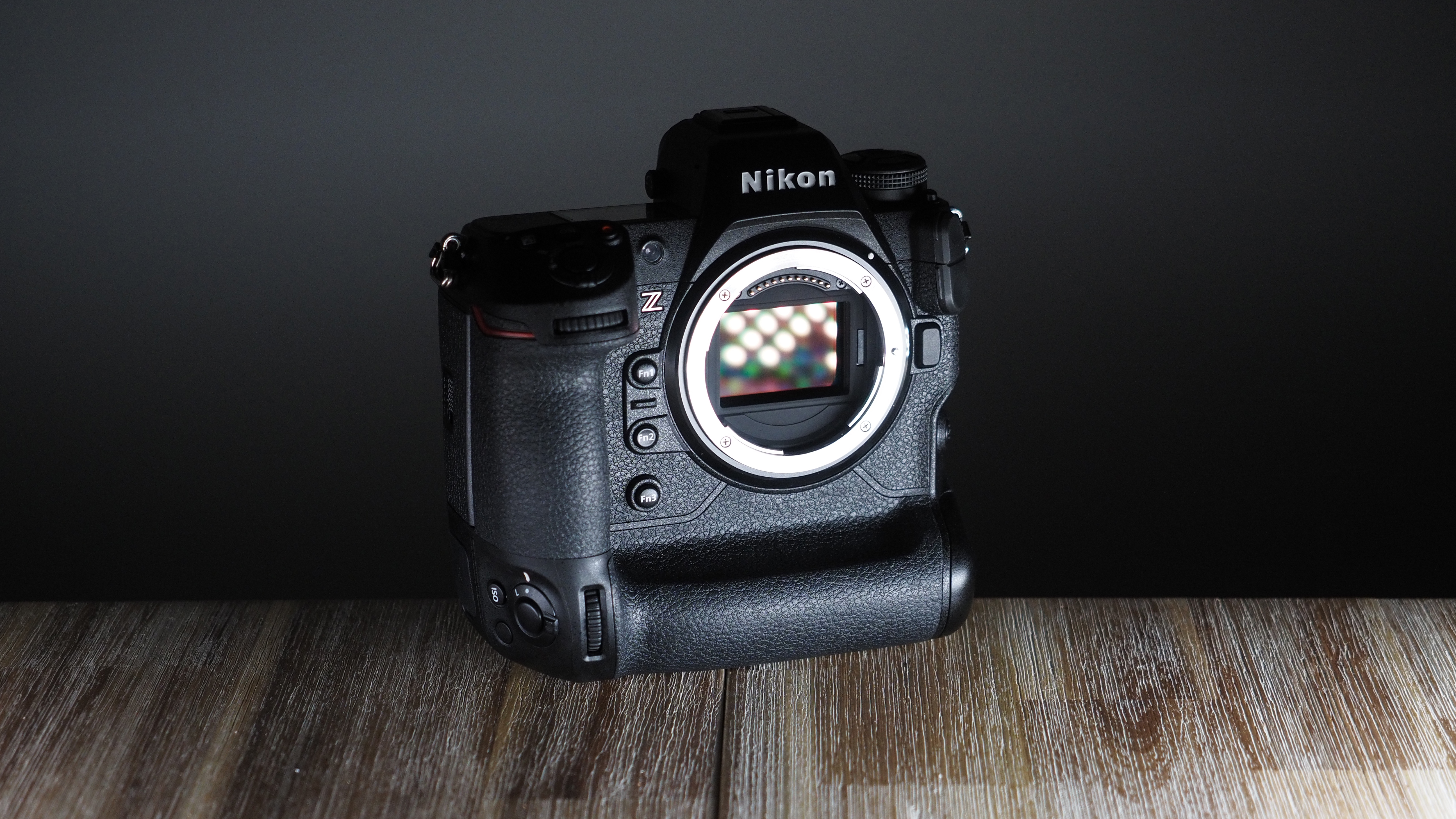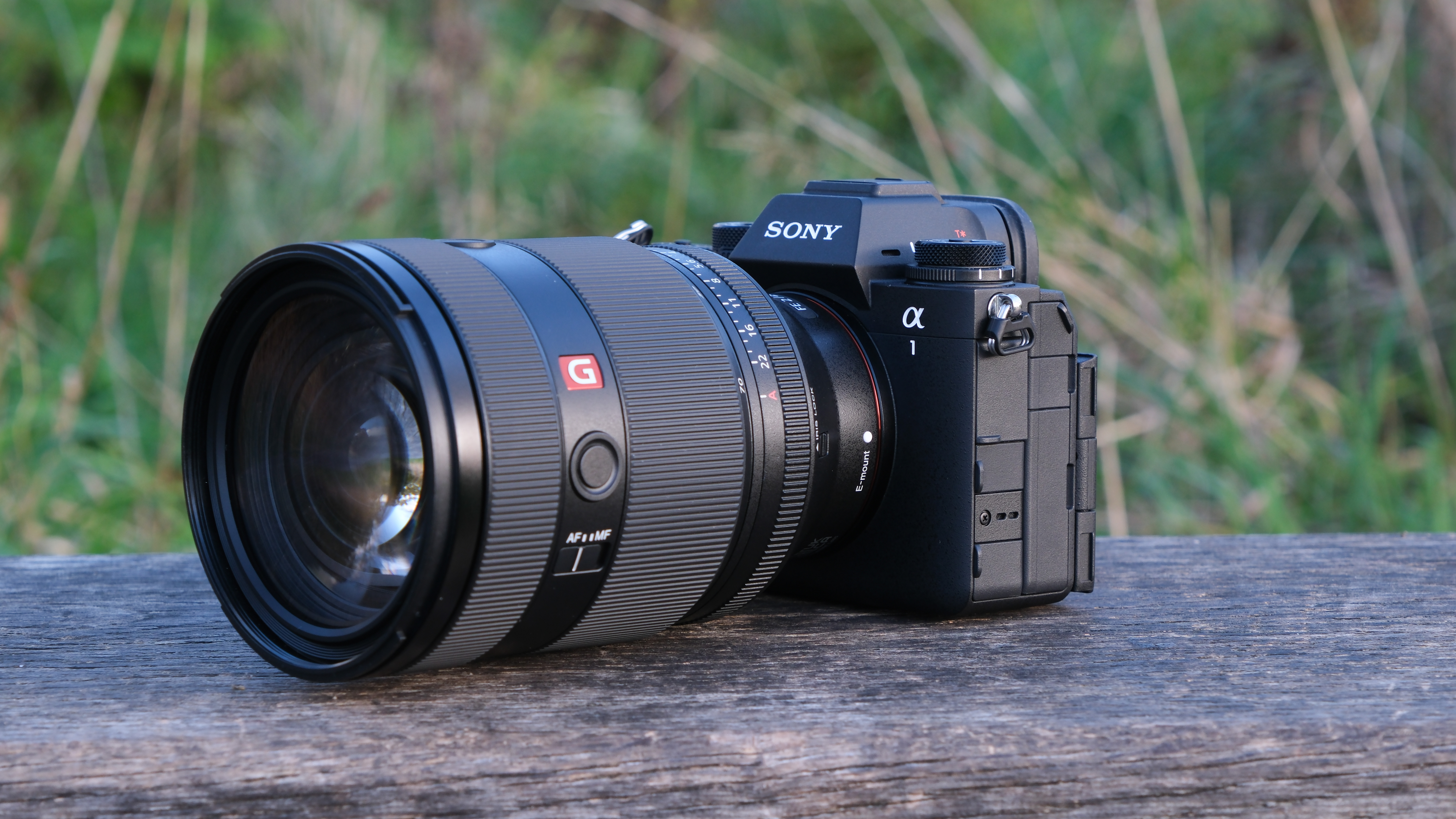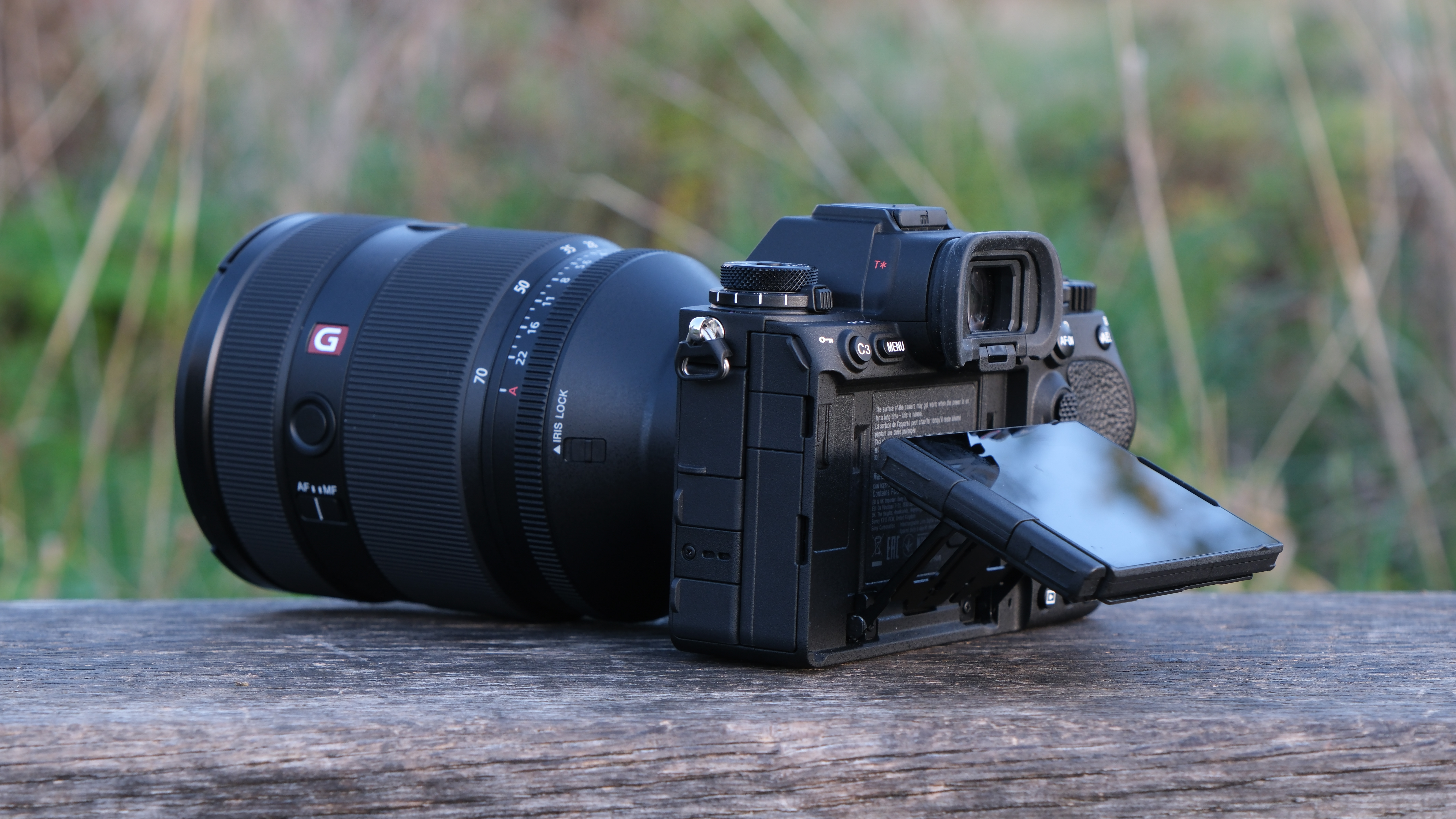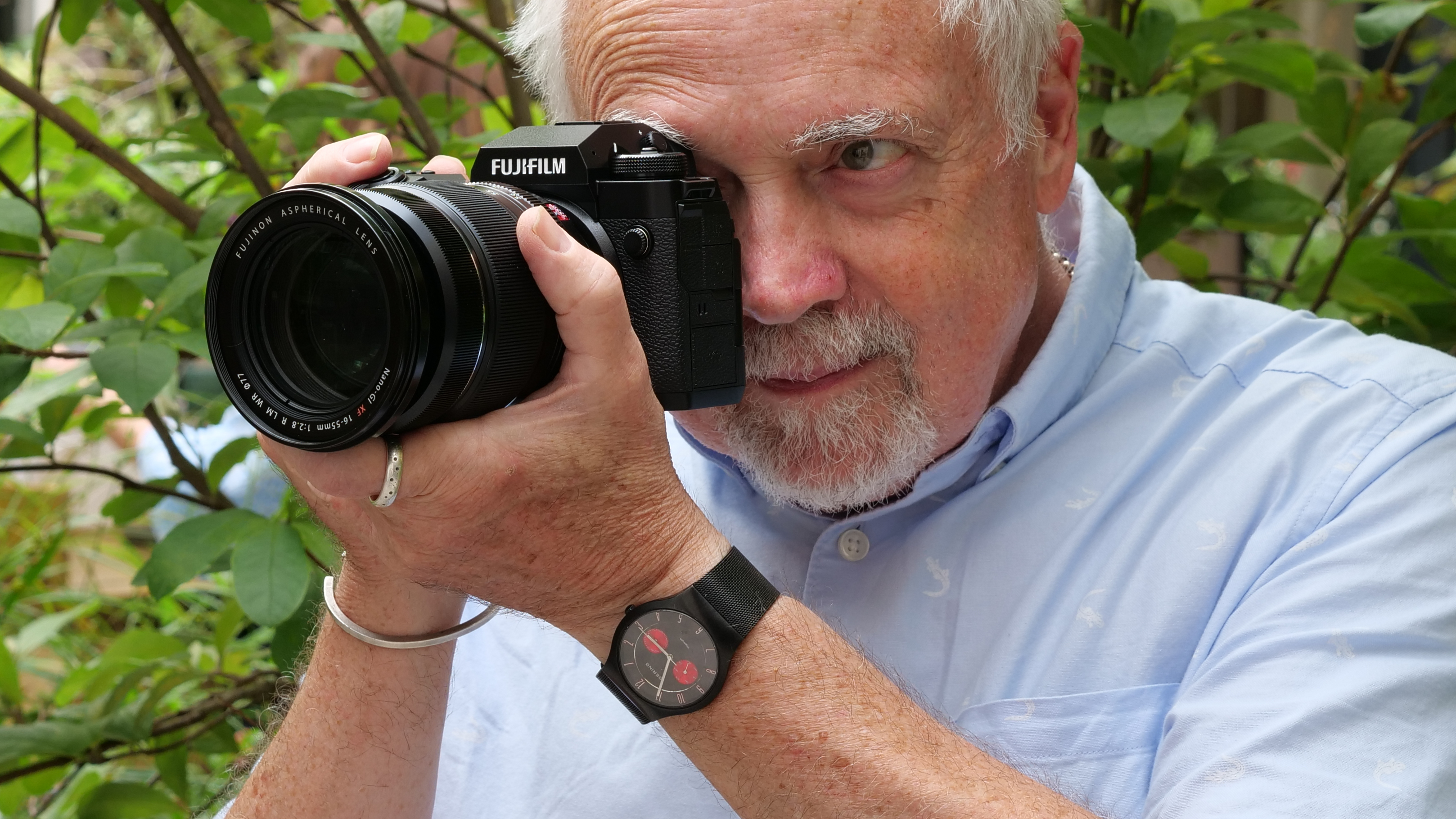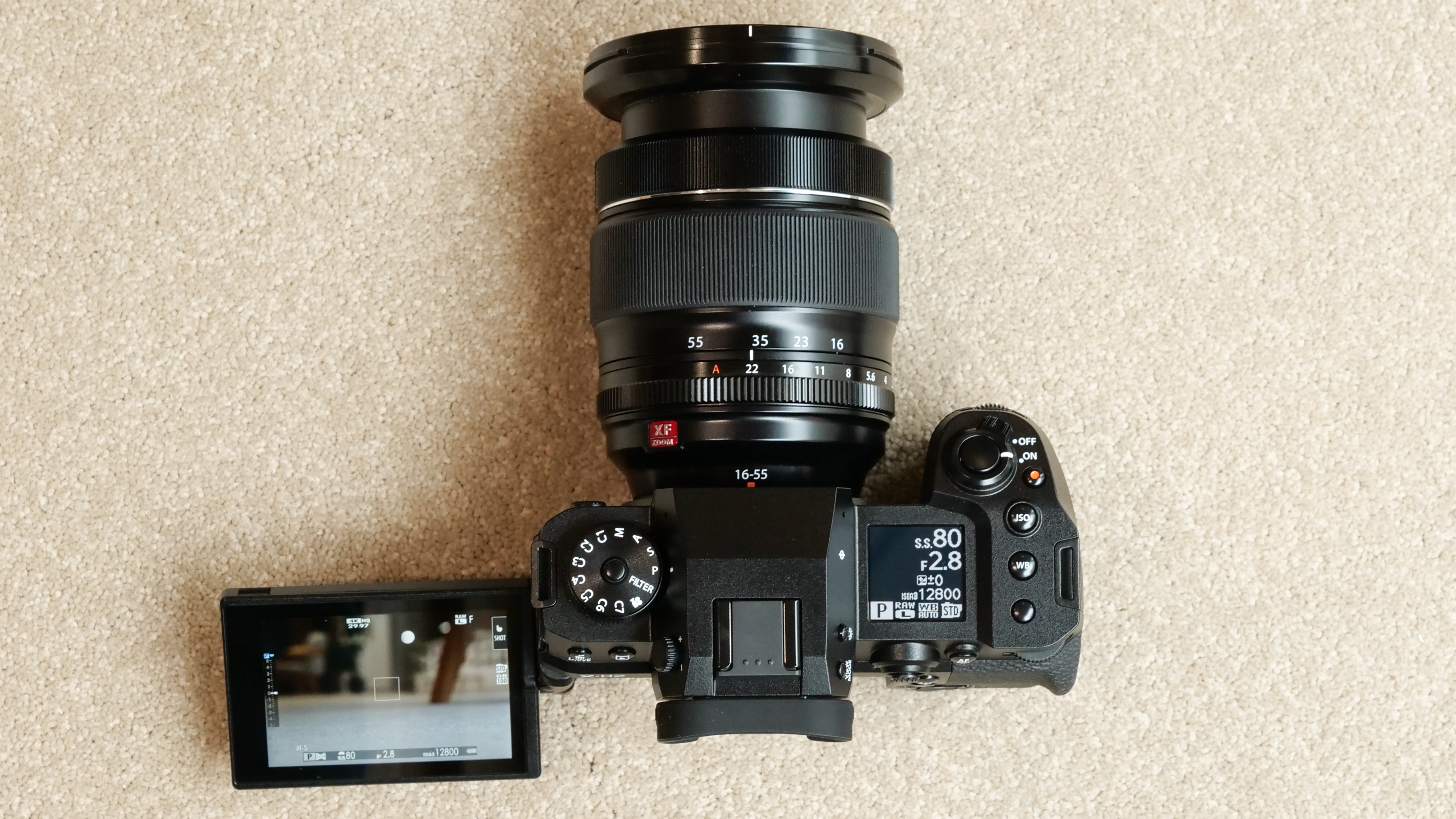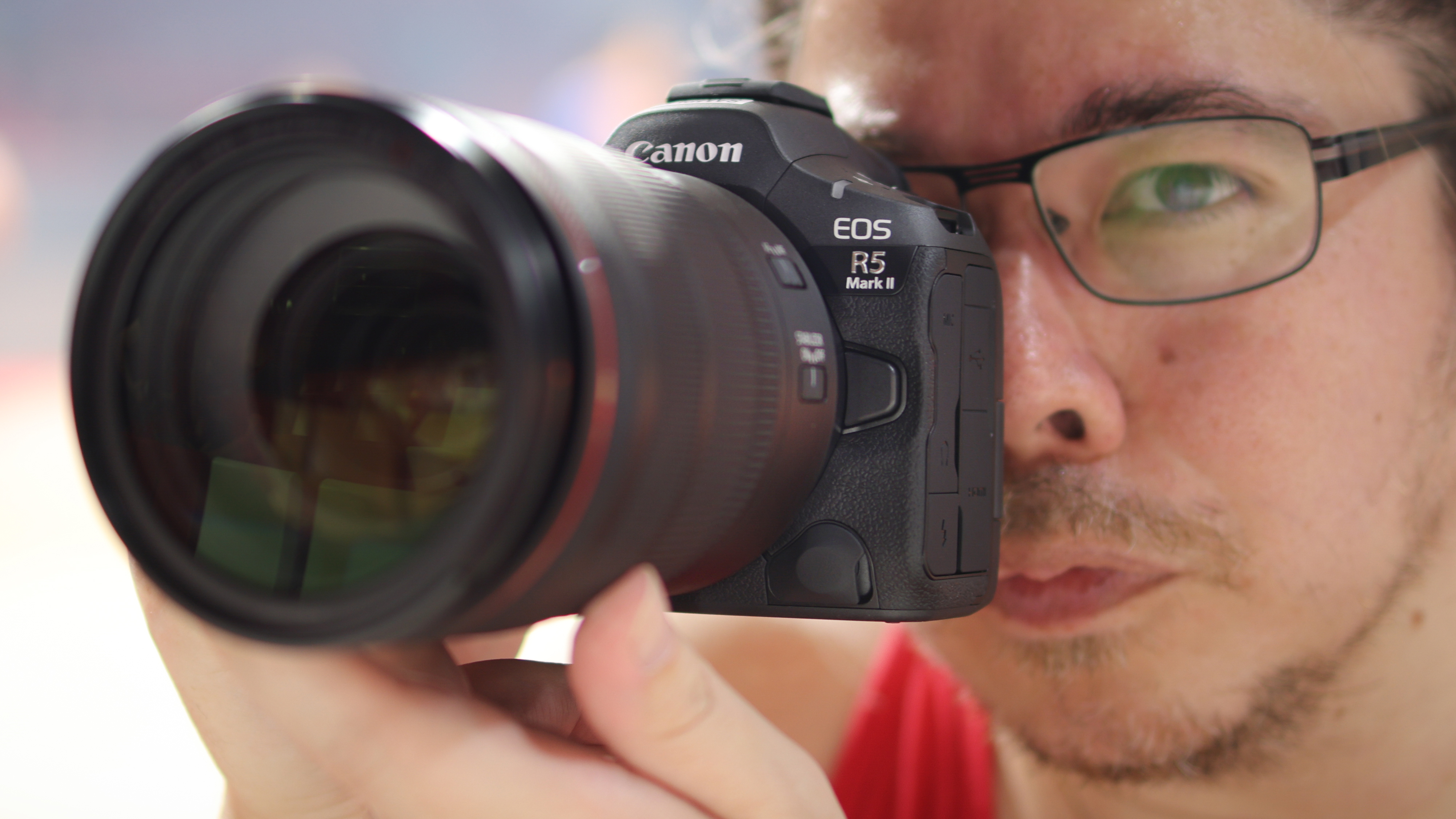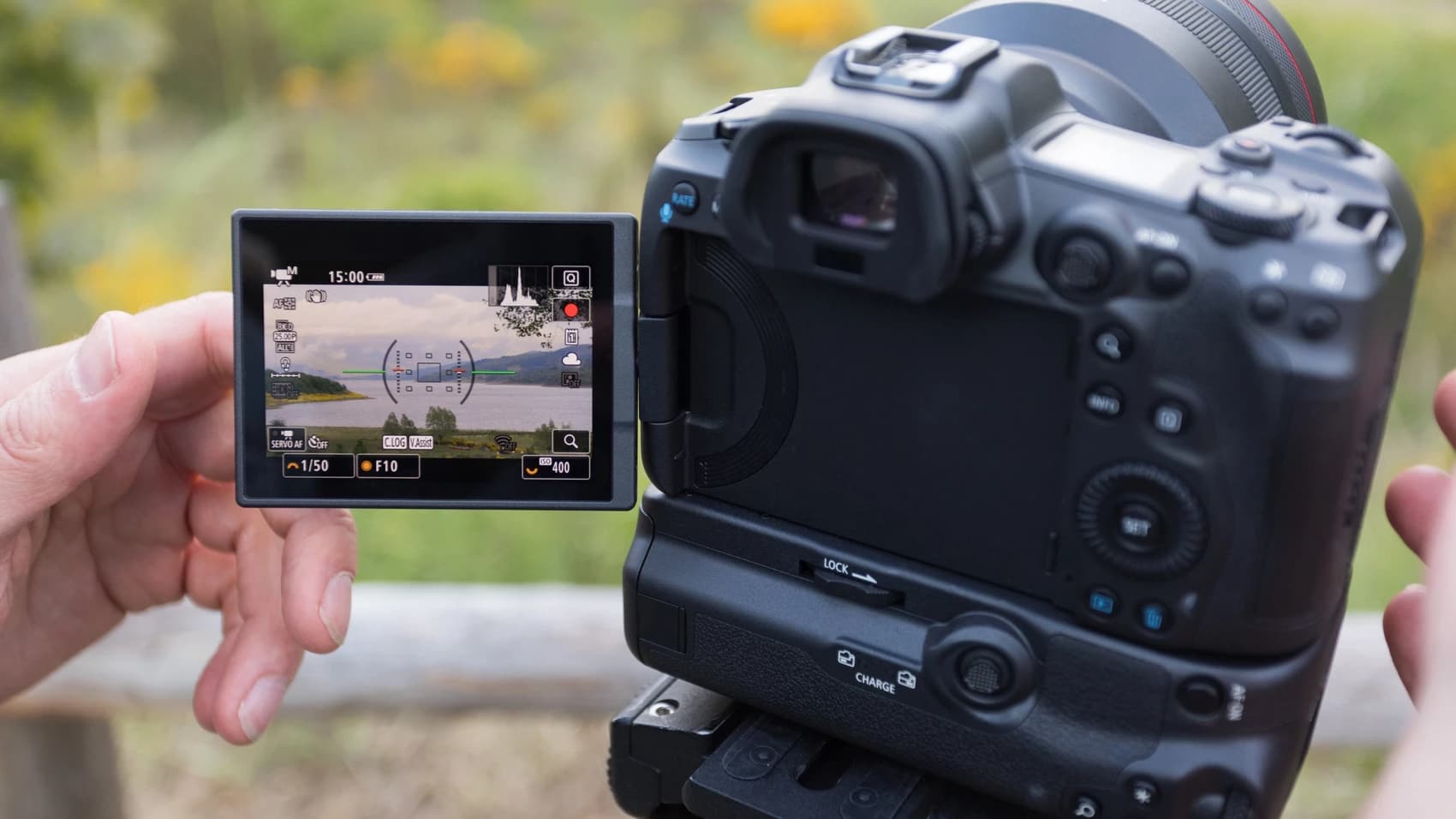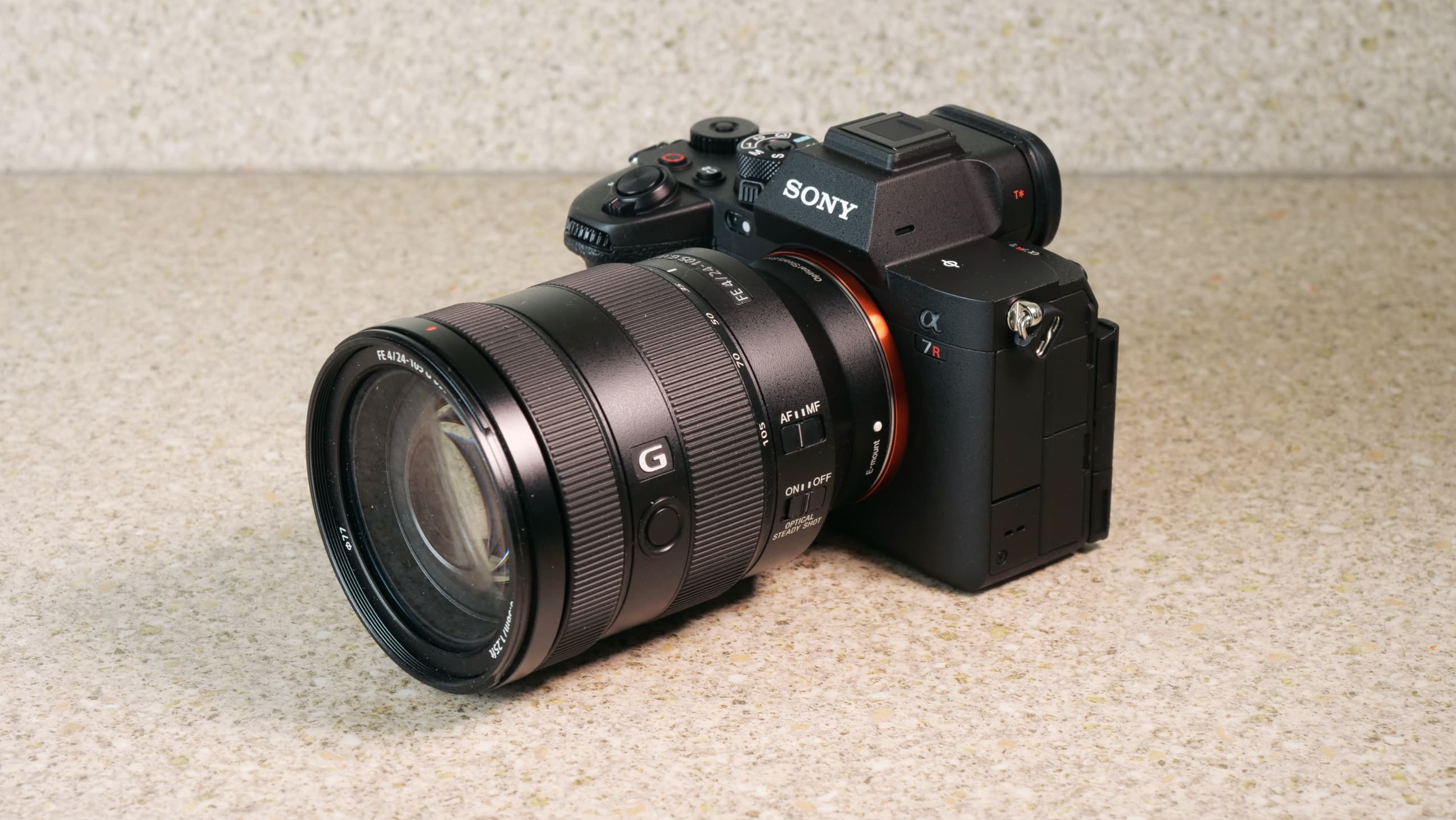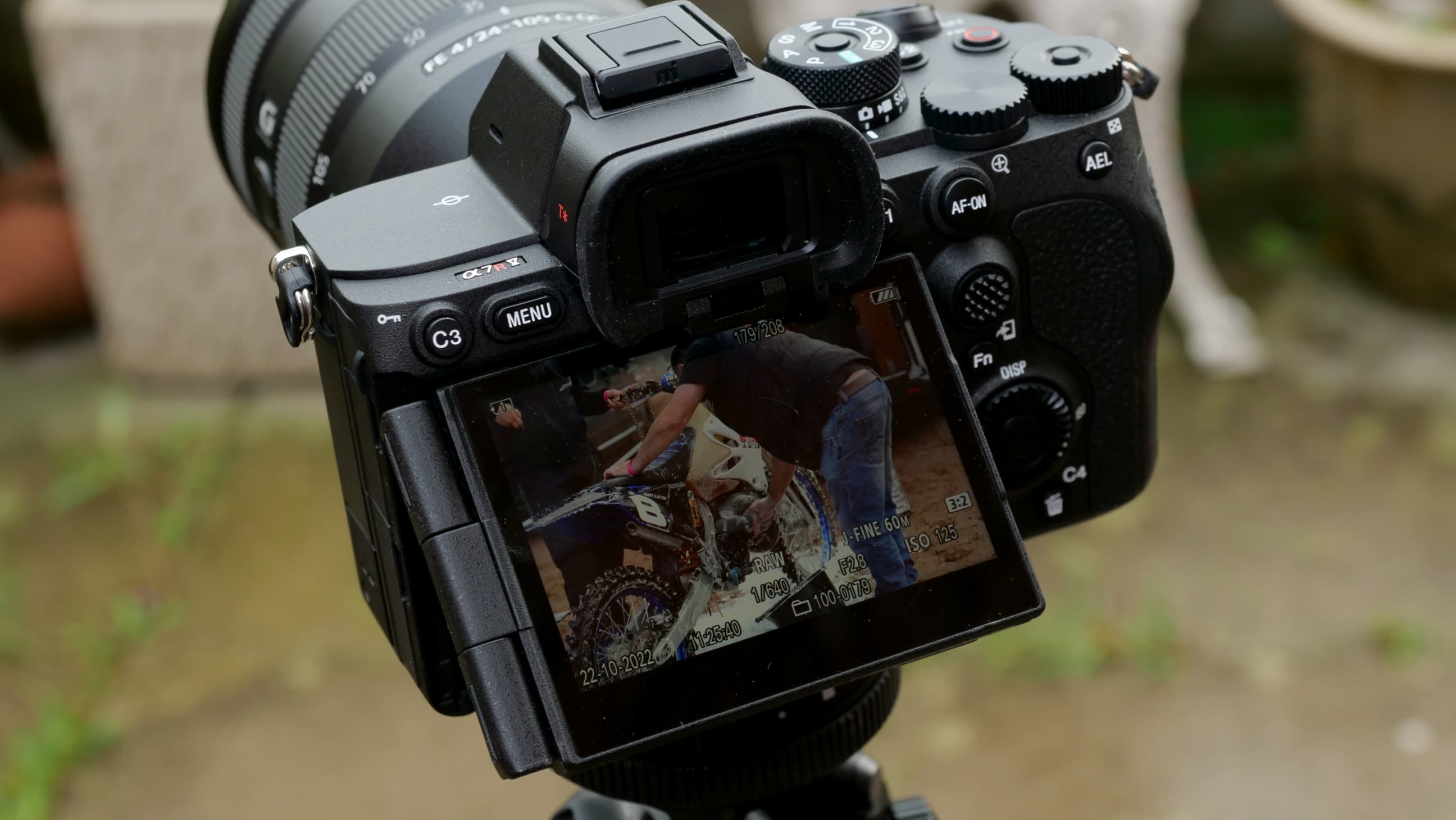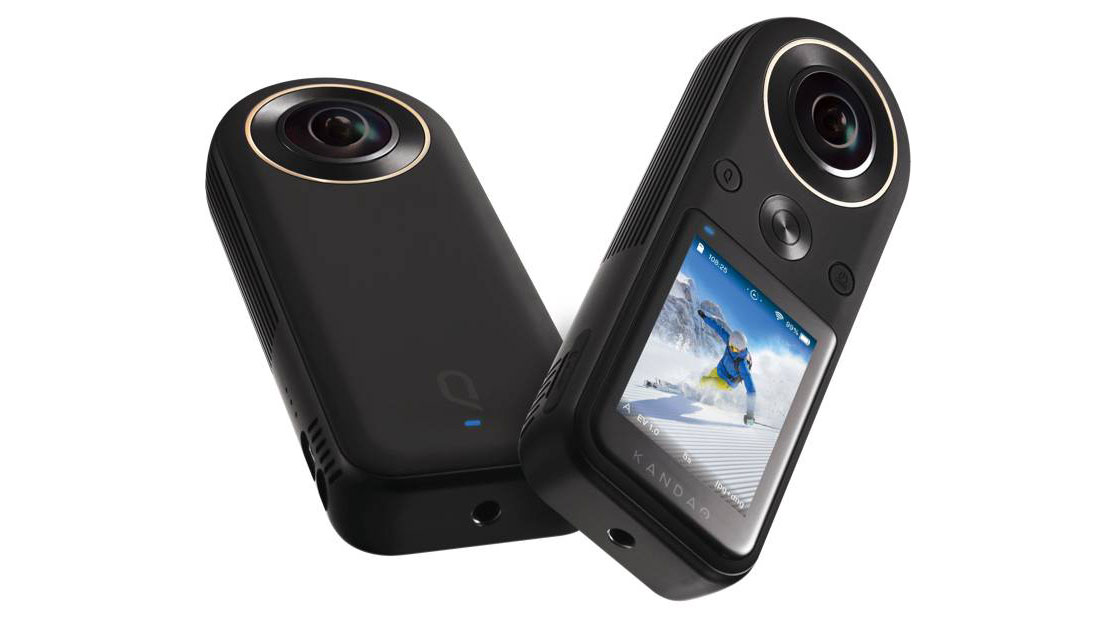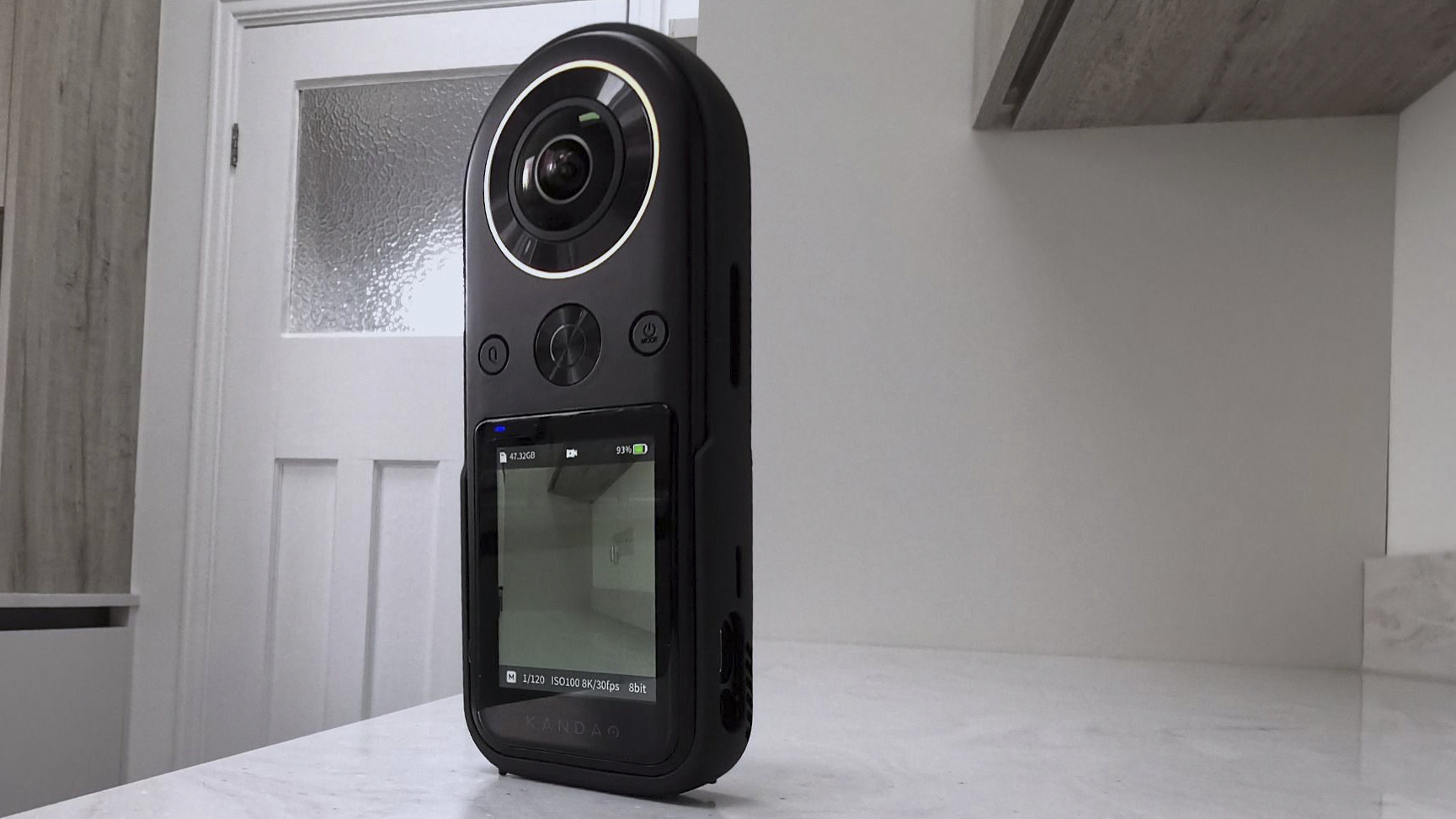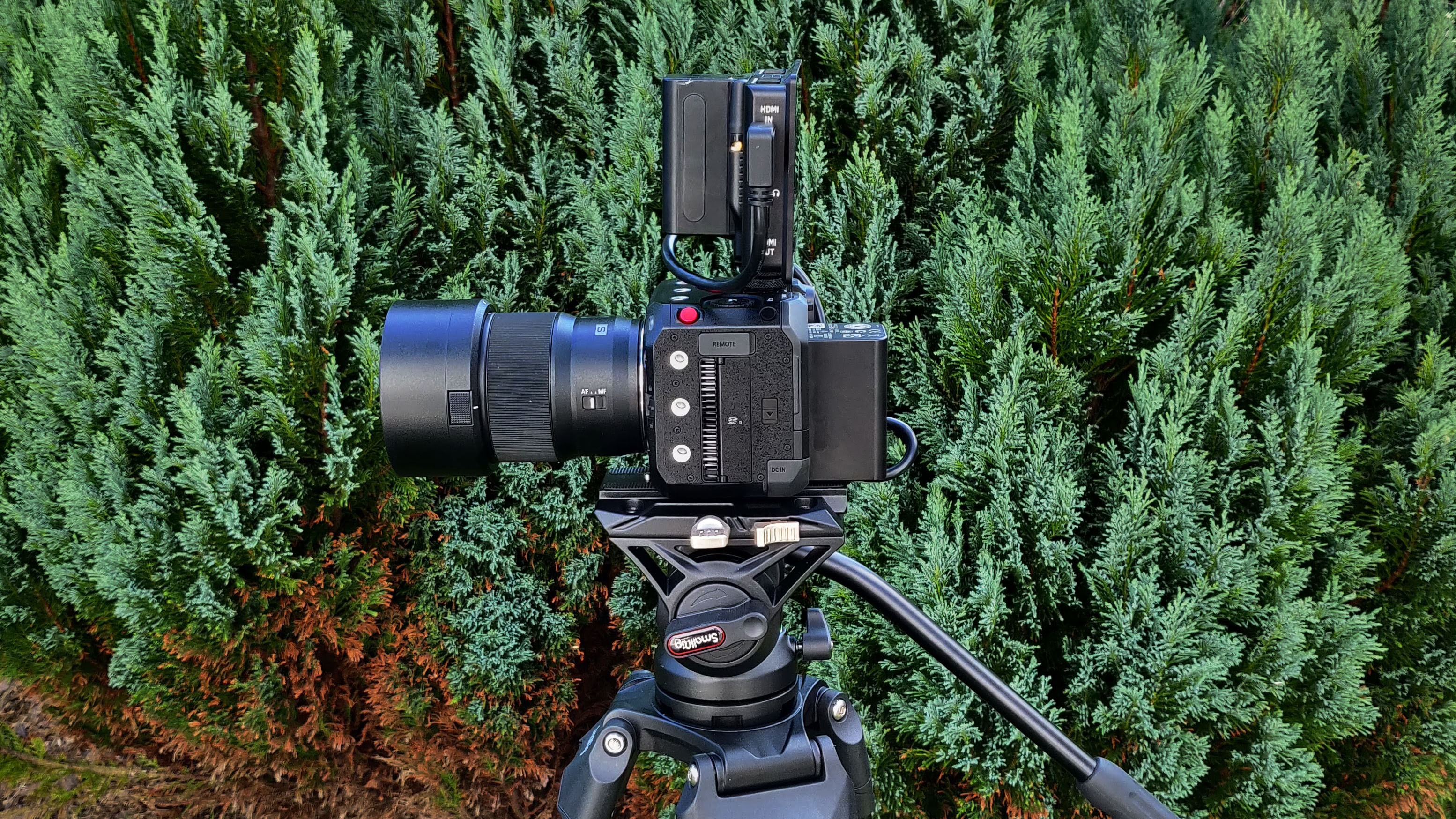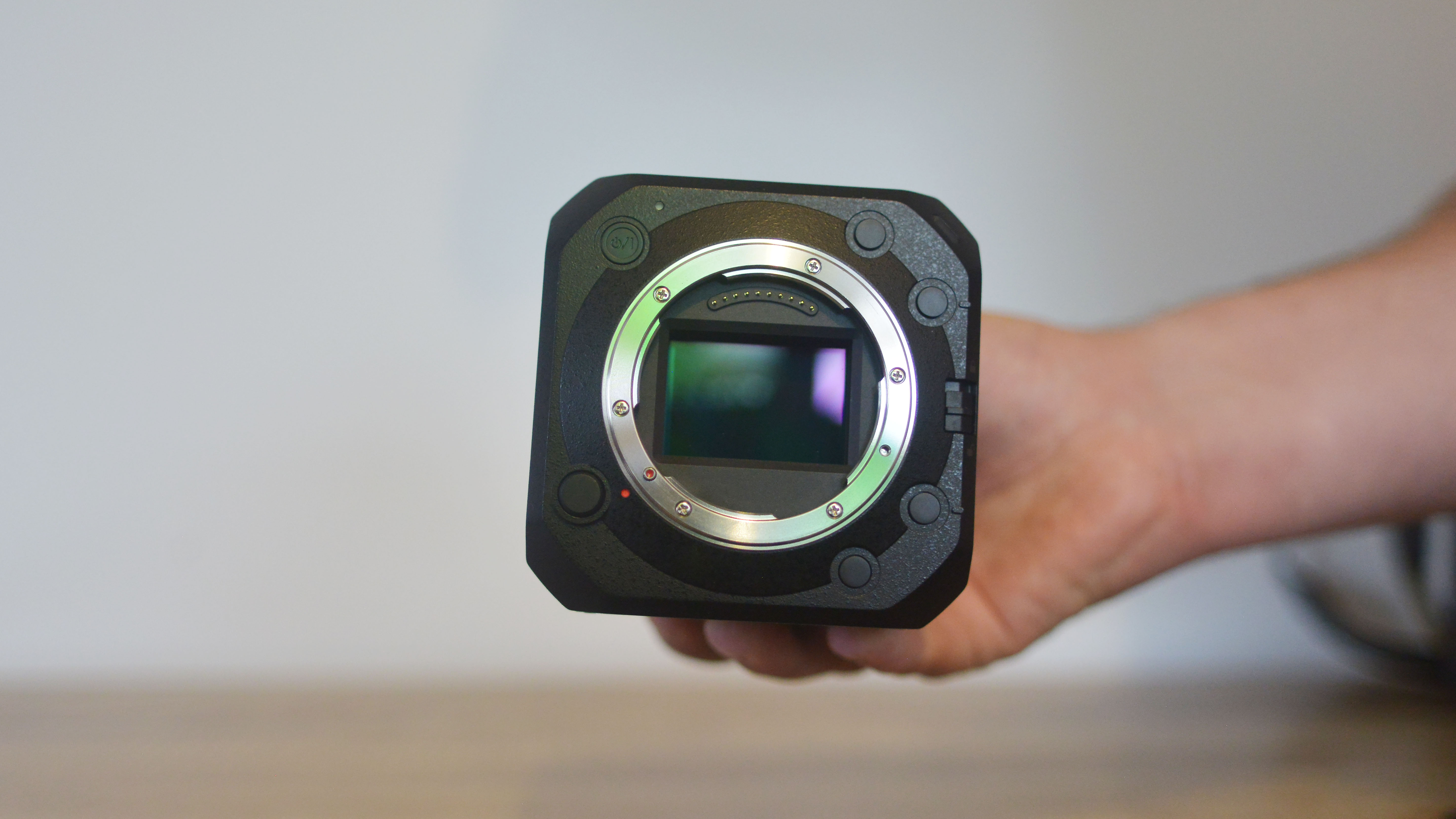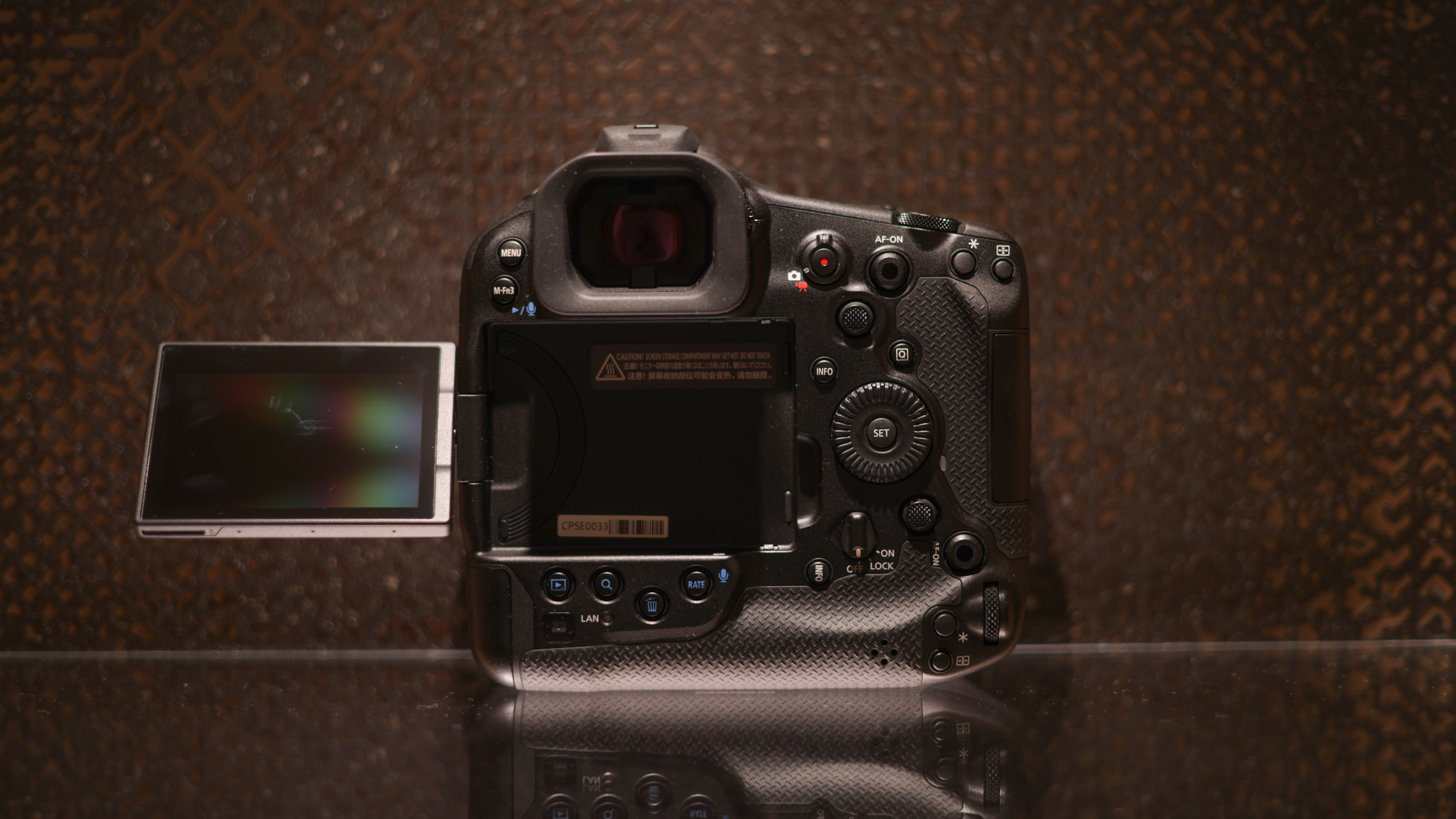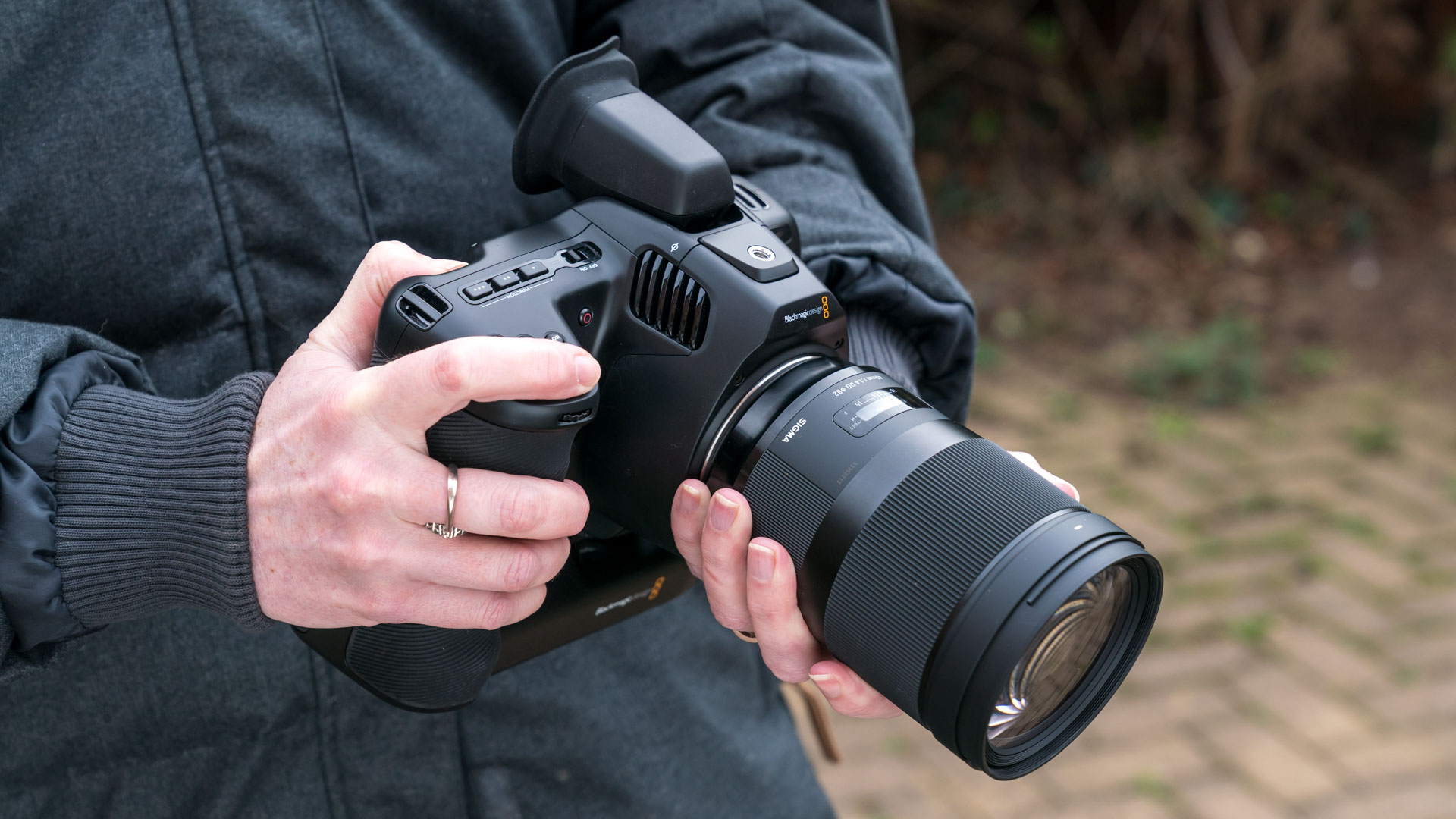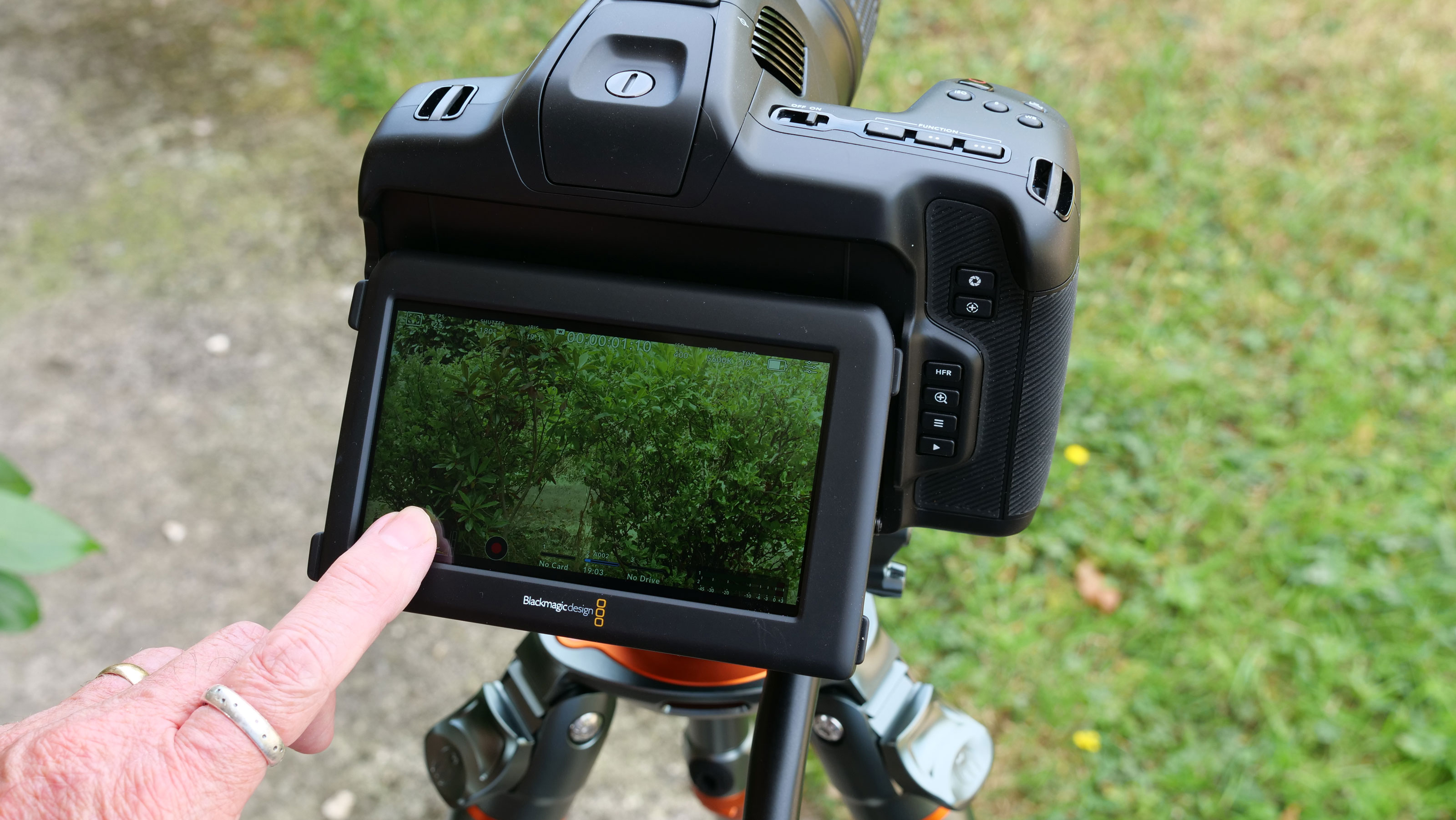Best 8K and 6K camera in 2025: High-resolution video cameras are a step up from 4k
The best 8K and 6K cameras are becoming the next big thing in video for filmmakers who are finding 4K is no longer enough

Shooting in 8K or 6K feels like stepping into the future of filmmaking. While 8K is still far from being an industry standard, the ability to record at such high resolutions is a major advantage for videographers, giving you the freedom to crop into your footage without losing detail.
Every camera in this guide has been thoroughly tested by our team, and only those that truly impressed have made the cut. Most are versatile hybrid mirrorless models, but we’ve also included standout cinema cameras and even a 360-degree option for creators who want to push their visuals further.
Of course, ultra-high-resolution recording doesn’t come without challenges. Overheating, processing demands, and enormous file sizes are all part of the package. In practice, many will find the 6K models here more manageable than their 8K counterparts – but it would be impossible not to highlight Blackmagic’s astonishing 12K powerhouse, the URSA Mini Pro 12K.
You can scan our quick list below for a snapshot of our recommendations, or keep reading to discover in full which cameras stood out, and why they deserve a place on your shortlist.
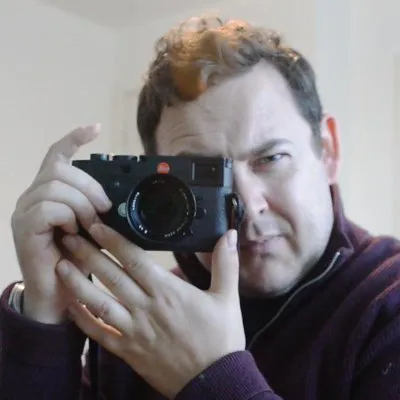
A video expert Sebastian has used many cinema cameras from the likes of Sony, RED, ARRI, and everything in between. He now spends his spare time using his trusted Leica M-E or Leica M2 shooting street photography or general life as he sees it, while also operating his own RED camera setup.
The quick list
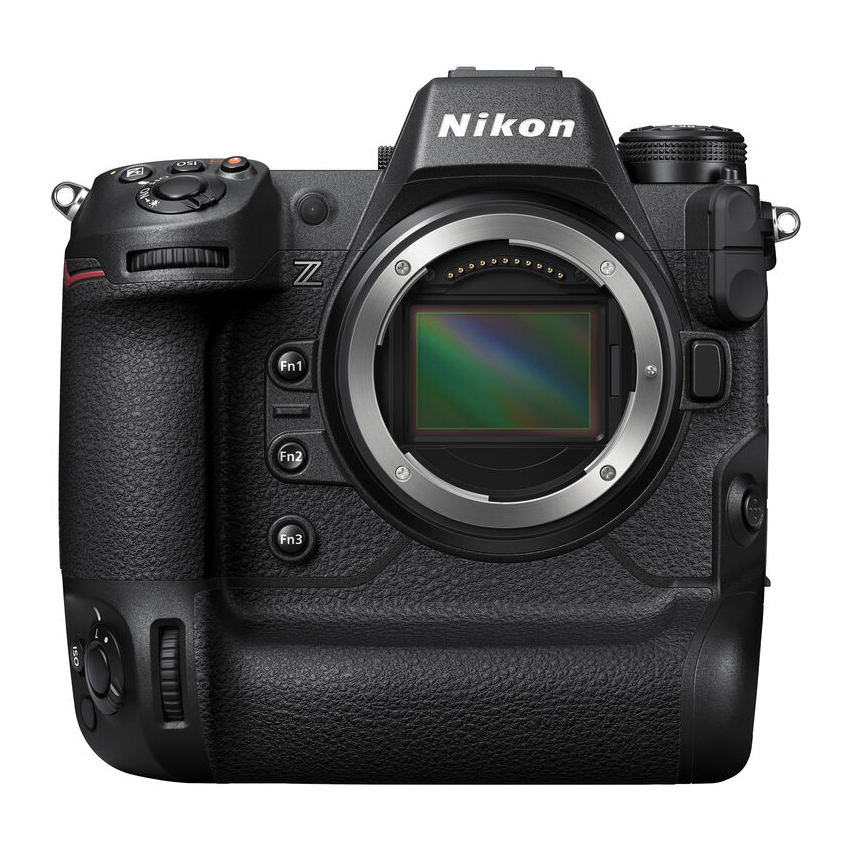
The Nikon Z9 is late to the pro mirrorless party – but with 120fps bursts and 2½ hours of 8K video, it may not matter.
Read more below

An expensive sequel to Sony's do-everything flagship, this is only really worth it for committed professionals – but is still a spectacular camera.
Read more below
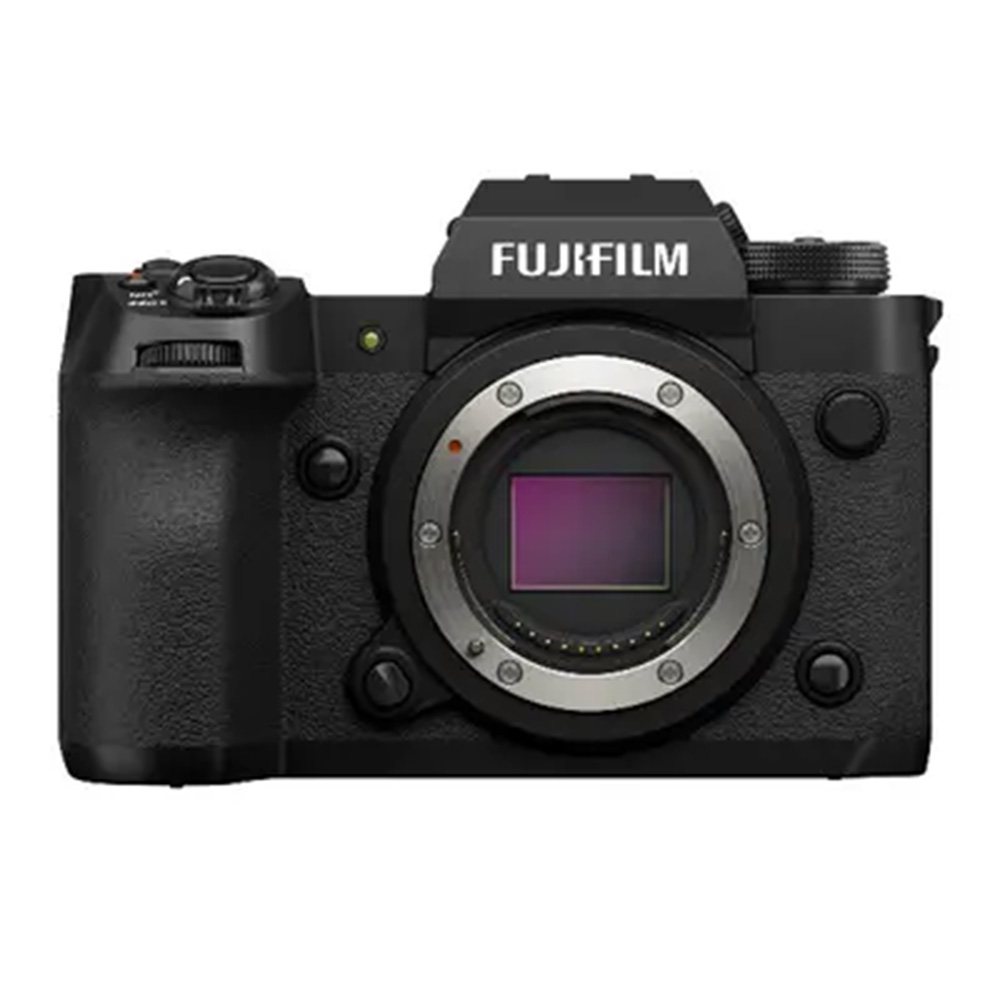
The Fujifilm X-H2 is quite simply astonishing for the price. It may well be Fujifilm's most expensive APS-C camera yet but there is good reason for it.
Read more below
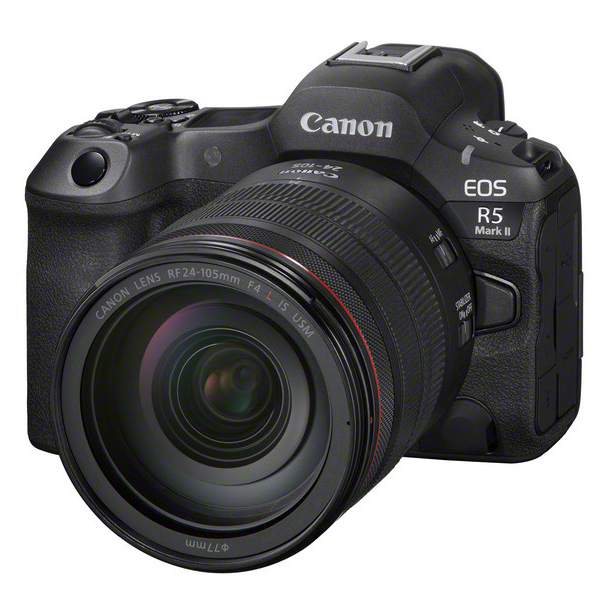
Having addressed the overheating issues with the original R5, the Canon EOS R5 Mark II is the best camera the firm has ever made – shooting 8K 60p RAW video.
Read more below
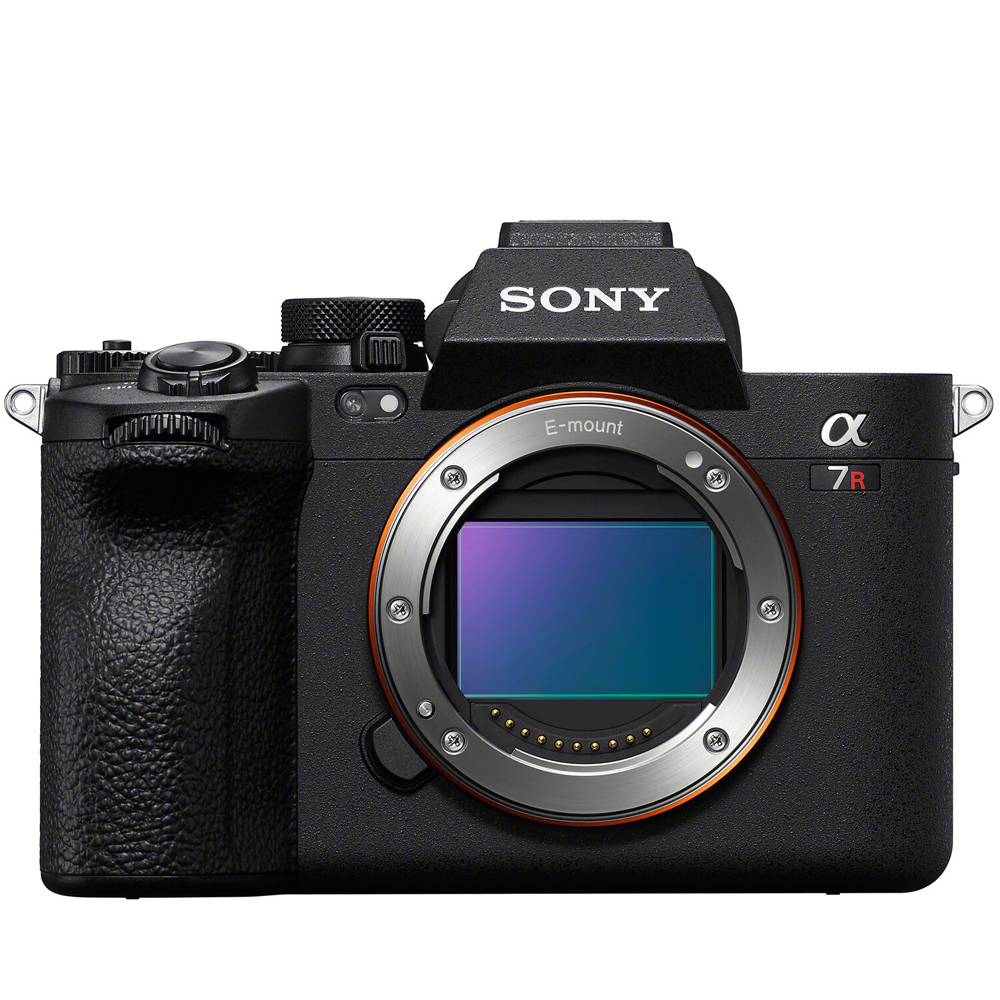
The mirrorless Sony A7R V may be a physically light and slim camera, but in terms of resolution and performance, it's a real heavyweight.
Read more below
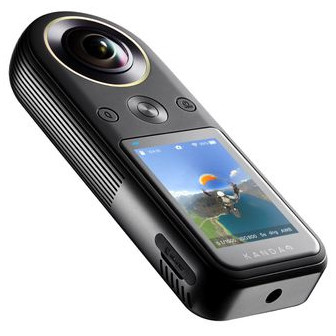
It may be costly, but the Kandao QooCam 8K 360 is in a class of its own when it comes to high-resolution 360º content. For capturing absolutely everything around you, it's the best bet.
Read more below
Load the next products ↴
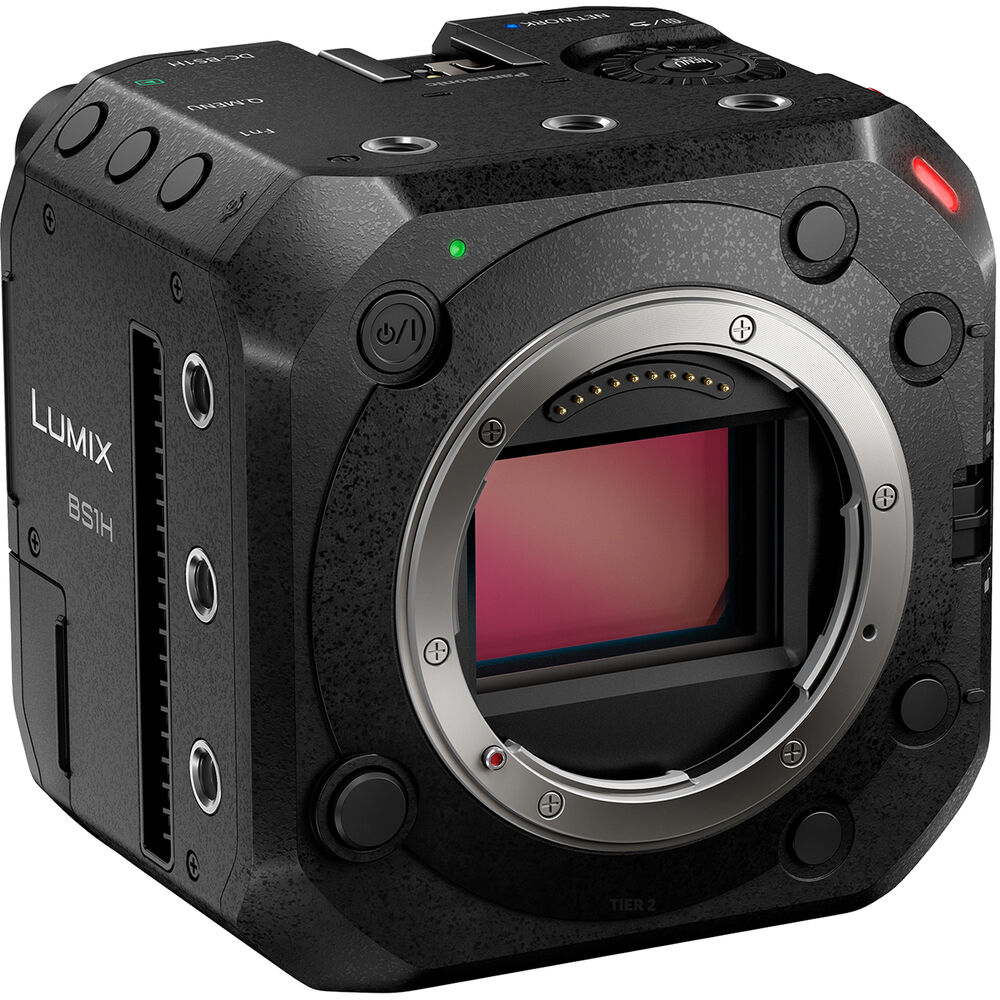
The Panasonic Lumix BS1H is squarely pitched at serious filmmakers. With cutting-edge specs in a small form factor, it can be used solo with ease.
Read more below
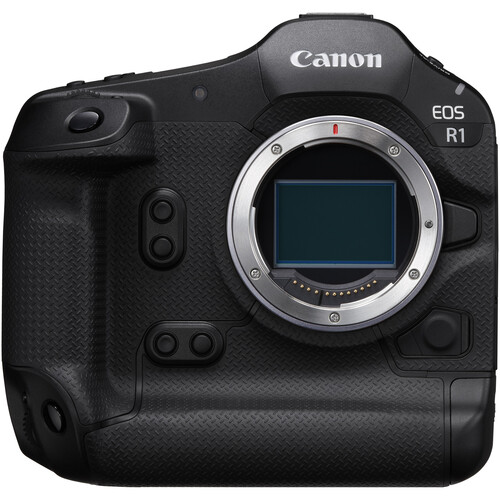
Able to record internal 6K DCI RAW at 60p with lengthy recording times, the sportster EOS R1 offers a slew of cinematic video options.
Read more below

While 'pocket' is a bit of a misnomer in terms of its physical size, the Blackmagic Pocket Cinema Camera 6K Pro delivers a spectacular pro filmmaking spec, at a wallet-friendly price.
Read more below
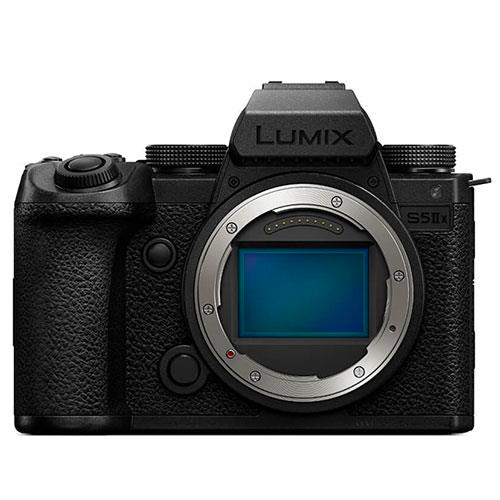
With phase-detection autofocus and a gallery of cine-optimised features, the Lumix S5 IIX is the hybrid camera of choice for those who shoot a lot of video.
Read more below
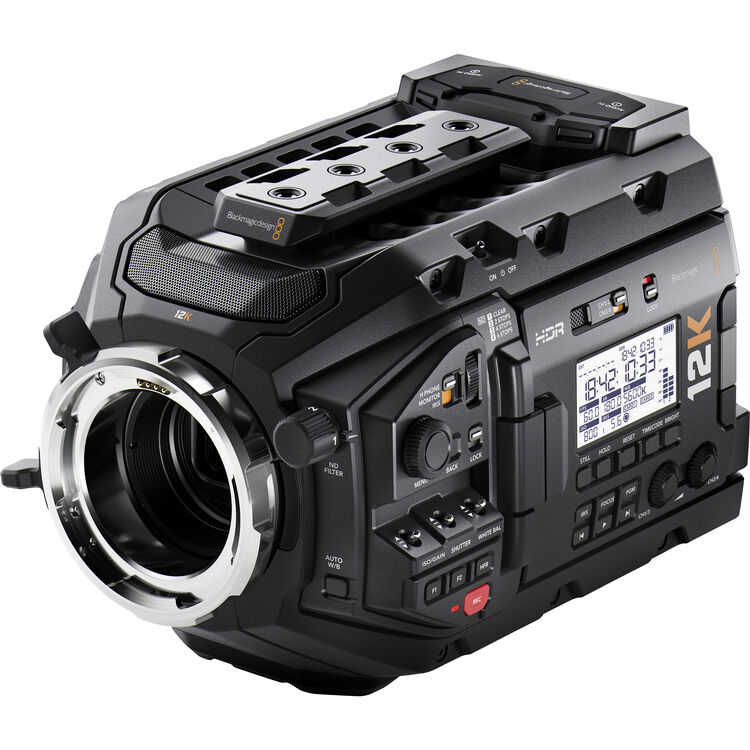
If nothing but the best will do, why not opt for the only camera on the market that shoots 12K! Built like a tank, the Blackmagic Ursa Mini Pro 12K is made for professional use.
Read more below
The best 8K and 6K cameras
Why you can trust Digital Camera World
Best 8K Nikon camera
Specifications
Reasons to buy
Reasons to avoid
✅ 8K 30p & 60p: Capable of 8K video recording at 30fps in 10-bit Apple ProRes 4:2:2 HQ and 60fps in 12-bit ProRes RAW HQ.
✅ Nine Recognition Modes: Recognizes human and animal eyes, heads, bodies, and even vehicles like cars, trains, and motorbikes.
❌ Steeper Learning Curve: The advanced autofocus system with Deep Learning recognition can be complex for users not familiar with such technology.
❌ No Backup Shutter Option: For those who prefer having a mechanical shutter option, the Z9 lacks this completely, which might be a drawback in certain situations where electronic shutters struggle (e.g., artificial light flicker).
Nikon might've been late to the game in launching its professional, top-spec mirrorless but the Nikon Z9 was definitely worth the wait. It's an absolute beast of a camera when it comes to video, capable of recording in 8K 30p 10-bit Apple ProRes 4:2:2 HQ or 8K 60p 12-bit ProRes RAW HQ and has an enormous record limit of 2 hours.
Nikon removed the mechanical shutter completely which means the Z9 is capable of 120fps continuous shooting and has a max shutter speed of 1/32,000 which makes it perfect for sport and bird photography. The Z9 is powered by Deep Learning AF which makes the camera capable of nine kinds of recognition: human eyes, faces, heads and upper bodied; animal eyes, heads, and bodies; and cars, planes, trains, and motorbikes.
It has the same 493 AF points as the Nikon Z7 II, which seems impressive until you find out that the Canon EOS R3 has a whopping 4,779 AF points. The Z9 comes in quite a bit cheaper than both the Sony A1 and the Canon EOS R3 and it's packed with advanced features.
Read our full Nikon Z9 review for more details
Final thoughts
The Nikon Z9 is a powerhouse for high-resolution video, offering internal 8K/60p and 4K/120p recording with no crop or time limits - making it a top-tier choice for filmmakers and content creators pushing beyond 4K.
Its stacked 45.7MP sensor, advanced subject detection AF, and robust, fanless build set a new benchmark for hybrid shooting. With Nikon’s expanding Z-mount lens lineup and pro-level ergonomics, the Z9 delivers uncompromising performance in both video and stills, firmly securing its place as one of the best 8K-capable cameras in 2025.
Best 8K Sony camera
Specifications
Reasons to buy
Reasons to avoid
✅ Superb stabilised video: The Sony A1 II produces great-looking 8K 30p video, and its in-body stabilization is hugely effective.
✅ Fast and accurate AF: The A1 II has exceptional autofocus capabilities, with an upgraded subject-detection system.
❌ Extremely expensive: The Sony A1 is priced significantly higher than other top-tier models like the Nikon Z9 or Canon EOS R5 Mark II.
❌ Not a huge jump from A1: If you already own the Sony A1, this sequel isn't necessarily enough of a game-changer to justify the upgrade.
The Sony A1 II is certainly the best Sony 8K camera. The professional flagship of the range, it shoots brilliant 8K and 4K video, with a range of flexible options to tantalise videographers. You can use Sony’s S-Cinetone to produce finely graded, ready-to-use footage straight out of camera, or you can record in S-Log to maximise detail for your own grade after the fact.
The in-body image stabilization (IBIS) is also up there with the best, making it much easier to achieve smooth pans and other camera movements handheld, without a gimbal. The Sony A1 II also benefits from one of the best autofocus systems in the business, with upgraded auto subject-detection.
However, we do unfortunately have to talk about the price. Even by the standards of professional cameras, the Sony A1 II is very expensive, more so than the Nikon Z9 or the Canon EOS R5 Mark II. You have to need a camera that can do absolutely everything in order for the buy to be worth it – even Sony itself has cheaper 8K options, like the A7R V featured below. If you are a pro who already has a significant investment in Sony lenses, and you need the highest level of performance possible and you have a big budget, the Sony A1 II makes sense. For everyone else, it's a tougher sell.
Read our full Sony A1 II review for more details
Final thoughts
The Sony A1 II takes flagship performance to new heights, delivering 8K/60p and 4K/120p recording with refined dynamic range, fast readout speeds, and cutting-edge autofocus.
Its 61MP sensor supports immense detail for both video and stills, while advanced AI-driven subject tracking and improved heat management make it a true hybrid workhorse. For professionals seeking top-tier resolution, speed, and versatility in a single body, the A1 II sets a formidable standard.
Best 8K Fujifilm camera
Specifications
Reasons to buy
Reasons to avoid
✅ Versatile Resolution: Capable of recording in both 8K 30p and 6.2K 30p, offering flexibility in video quality and file sizes.
✅ Smooth Shooting: The in-body stabilization ensures smoother footage, particularly when shooting handheld or in challenging conditions.
❌ APS-C Sensor: While the camera excels in many areas, it uses an APS-C sensor rather than a full-frame sensor. This could be a disadvantage for users who prioritize the larger sensor format for depth of field and low-light performance.
❌ Lacks Higher Frame Rate Options: Unlike the X-H2S, the X-H2 cannot record 5K 120p, which limits options for super slow-motion footage.
The Fujifilm X-H2 is quite simply astonishing for the price. It may well be Fujifilm's most expensive X-series camera yet but there is good reason for it and you'd be hard-pushed to find another 8K camera at this price. Whether you're using it for photography or videography, the high-resolution sensor, in-body stabilization and lightning-fast AF make for an incredibly smooth shooting experience.
One of the disadvantages to shooting 8K is overheating but the X-H2 comes with cooling vents that claim a recording time of 160 minutes at 25° without any cooling or 240 minutes with the cooling fan (purchased separately). It might not be able to capture 5K 120P like the Fujifilm X-H2S but it can record 8K 30P and 6.2K 30P. This incredibly versatile camera would be well suited to a content creator who needs to shoot high-quality videos and photos but doesn't need a full-frame sensor.
Read our full Fujifilm X-H2 review for more details or Fujifilm X-H2 vs Fujifilm X-H2s
Final thoughts
The Fujifilm X-H2 delivers stunning 8K video in a compact APS-C body, making it a standout option for creators who want high-resolution recording without the bulk of full-frame systems.
Its 40MP sensor, 10-bit 4:2:2 internal recording, and F-Log2 support provide excellent flexibility for professional workflows, while Fujifilm’s renowned color science enhances both video and stills output. With strong IBIS, solid autofocus, and robust build quality, the X-H2 offers exceptional value and performance.
Best 8K Canon camera
Specifications
Reasons to buy
Reasons to avoid
✅ Extended recording times: A newly designed cooling system and optional (though expensive) fan grip improve recording times.
✅ 8K 60p RAW: Outpacing the Sony A1 II in terms of frame rate, the EOS R5 Mark II meets the high benchmark for 8K performance.
❌ Overheating in 8K: While things are better than they were on the original EOS R5, 8K 60p recording is still limited to around 20 minutes.
❌ Expense of camera and accessories: This is already an expensive camera, and the optional cooling fan grip is outrageously priced.
The original Canon EOS R5 was one of the best cameras ever made – for photographers at least. While its 8K video specs were impressive, severe limits to recording times due to overheating made the camera a bit of a white elephant for video professionals. Now comes the turn of the EOS R5 Mark II, a substantial upgrade in just about every way, with much-improved recording times thanks to a newly designed body with passive cooling.
This system can also be enhanced into active cooling with the addition of the Canon CF-R20EP battery grip, which includes a fan (though it will set you back an extra $399 on top of an already expensive cameras). Still, the 8K 60p RAW video that the EOS R5 Mark II can shoot is absolutely stunning, first-class stuff, and you'll likely want to be able to shoot it for as long as possible.
A hugely impressive professional camera that is good at everything, the EOS R5 Mark II is arguably the one to beat as far as 8K video is concerned.
Read our full Canon EOS R5 Mark II review for more details
Final thoughts
The Canon EOS R5 Mark II takes the R-series to the next level with impressive 8K/60p recording and advanced video features, paired with Canon’s renowned color science and exceptional autofocus.
Its 45MP full-frame sensor captures stunning detail, while the combination of in-body stabilization, 10-bit 4:2:2 recording, and advanced thermal management allows for prolonged shooting without overheating. Perfect for professional videographers and hybrid creators, the R5 Mark II offers a powerful, reliable solution for those seeking high-resolution video and versatility in a compact mirrorless body.
Best 8K camera for travelling light
Specifications
Reasons to buy
Reasons to avoid
✅ AI subject recognition AF: The new AI-driven autofocus system excels at rapid subject identification and tracking, making it highly effective for both stills and video. This "sticky" AF system is particularly helpful for fast-moving subjects.
✅ Endless customization options: The camera's buttons can be fully customized to suit the user's workflow, allowing for personalized control, although this comes with a learning curve.
❌ Physically Underwhelming: The compact body design feels too small for the larger professional lenses typically used with this camera. This could be uncomfortable for users who prefer a more substantial grip when working with heavier lenses.
❌ Unoptimized Controls: The button layout feels generic and not specifically tailored to the camera’s high-end capabilities. While customizable, this requires effort and memorization to make full use of the camera’s potential.
Technically overwhelming, physically underwhelming – that’s how the A7R V feels. The camera body feels too small – or not tall enough in the body – for the big pro lenses you’ll be using with it, and the controls follow a generic layout rather than being adapted to this camera’s strengths. You can customize the buttons endlessly to suit the way you work, but that takes time and also a good memory for which button you’ve customized to do what.
Technically, the A7R V is stunning. With 61 megapixels paired with new AI subject recognition AF is remarkable, both for its rapid identification and acquisition and its very sticky ‘tracking’. The image quality is every bit as good as that of the A7R IV before it (Sony says it’s better), and the bigger buffer makes the A7R V much more effective for prolonged burst shooting.
Read our full Sony A7R V review for more details
Final thoughts
The Sony A7R V combines cutting-edge 8K video recording with an ultra-high-resolution 61MP full-frame sensor, offering exceptional image quality and versatility for both stills and video professionals.
With advanced autofocus, powerful in-body image stabilization, and robust 10-bit 4:2:2 recording, it provides a seamless experience for creators demanding precision and flexibility. Its impressive video capabilities, along with superb dynamic range and processing speed, make the A7R V a top contender for those seeking top-tier 8K performance in a mirrorless system.
Best 8K 360 camera
Specifications
Reasons to buy
Reasons to avoid
✅ 8K resolution: The QooCam 8K offers the highest image quality in the 360º camera market, with 8K resolution delivering exceptional detail, sharpness, and smoothness in both 360º and widescreen video formats.
✅ 360º and widescreen versatility: The ability to capture 360º footage and then extract high-quality widescreen shots makes this camera extremely versatile for filmmakers who want creative flexibility.
❌ Noticeable fan: The camera has an audible fan that can be picked up by the microphone, which may be a distraction in quiet shooting environments or require post-processing to reduce noise in audio recordings.
❌ Not waterproof: The QooCam 8K isn't waterproof, and you’ll need to purchase a separate housing for underwater or wet-weather use. This adds cost and reduces its convenience for outdoor and adventure filming.
The QooCam 8K is the best 360 camera right now for image quality. A massive (by 360 standards) 1/1.7-inch CMOS sensor, 10-bit color, and, of course, that 8K resolution make sure of that. When it comes to the quality of its photos and videos, the QooCam 8K is peerless in the 360º market.
Photos have plenty of colors and contrast like nothing we’ve seen before from a camera like this. The ability to spit out a great-looking photo from a 360º video is welcome, while the detail, sharpness, and smoothness of video – whether in 360º or cut down to widescreen – itself makes the QooCam 8K a giant leap forward for creative filmmakers.
It does have an audible fan, however, the battery life isn't great and it's not waterproof without a housing. It was also pretty expensive.
Read our full QooCam 8K review for more details
Final thoughts
The Kandao QooCam 8K 360 pushes the boundaries of immersive content creation with stunning 8K 360-degree video capture. Its dual-lens design, high-resolution sensors, and real-time stitching capabilities deliver ultra-detailed and seamless 360-degree footage, making it an ideal choice for VR, live events, and interactive experiences.
With robust stabilization, an intuitive touchscreen interface, and a portable form factor, the QooCam 8K 360 provides professional-grade 360-video performance, positioning it as a leader in the 8K immersive camera market.
Best 6K box camera
Specifications
Reasons to buy
Reasons to avoid
✅ 6K and 4K Recording: The Panasonic Lumix BS1H can record 6K 24p or 4K 60p in 10-bit when using an image area equivalent to Super 35mm, offering exceptional detail and flexibility for serious video shooters.
✅ Superior Low-Light Performance: The Dual Native ISO technology helps in maintaining image quality in various lighting conditions, making it ideal for low-light shoots.
❌ Lack of Display: The BS1H does not come with an integrated screen, which can be inconvenient for some users. An external monitor is necessary, adding to the overall cost and setup complexity.
❌ Limited Full-Frame 4K at Higher Frame Rates: When using the full-frame sensor, the BS1H is limited to 4K 30p, with higher frame rates (4K 60p) requiring the Super 35mm crop, which might limit certain shooting scenarios.
For serious video shooters, the Panasonic Lumix BSH1 boxcam can make a lot of sense as it can be rigged up for a multitude of different uses. It has a 24.2-megapixel full-frame sensor with Dual Native ISO technology, 14+ stops of dynamic range, and an OLPH (Optical Low Pass Filter) which helps to suppress moire and false colors and make it excellent in low light. It's capable of recording 6K 24p or 4K 60p 10 bit when using an image area equivalent to Super 35mm. If you're using the entire 35mm sensor area, it can shoot 4K 30p 10-bit 4.2.2 in H.264.
With live streaming growing increasingly popular, the BS1H is capable of transmitting high-quality footage to social streaming platforms over a wired LAN collection. It can stream 4K 60p video in H.265 which means the bit rate is halved and the image quality is kept the same. The lack of a screen may be off-putting but its modular system means you can easily attach an external recorder such as the Atmos Ninja V which will also make it capable of outputting 12-bit raw video.
Read our full Panasonic Lumix BSH1 review for more details
Final thoughts
The Panasonic BS1H is a unique and powerful 6K camera designed for professionals seeking a modular, compact solution for high-end video production. With its full-frame 24.2MP sensor, 6K/60p recording, and 10-bit 4:2:2 output, it delivers exceptional image quality and flexibility for both studio and on-location shoots.
Its modular design allows for custom rigging and easy integration into multi-camera setups, while features like V-Log, high frame rate recording, and advanced autofocus enhance its appeal for filmmakers. The BS1H is a standout choice for those looking for cinematic 6K performance in a versatile and scalable package.
Best 6K Canon camera
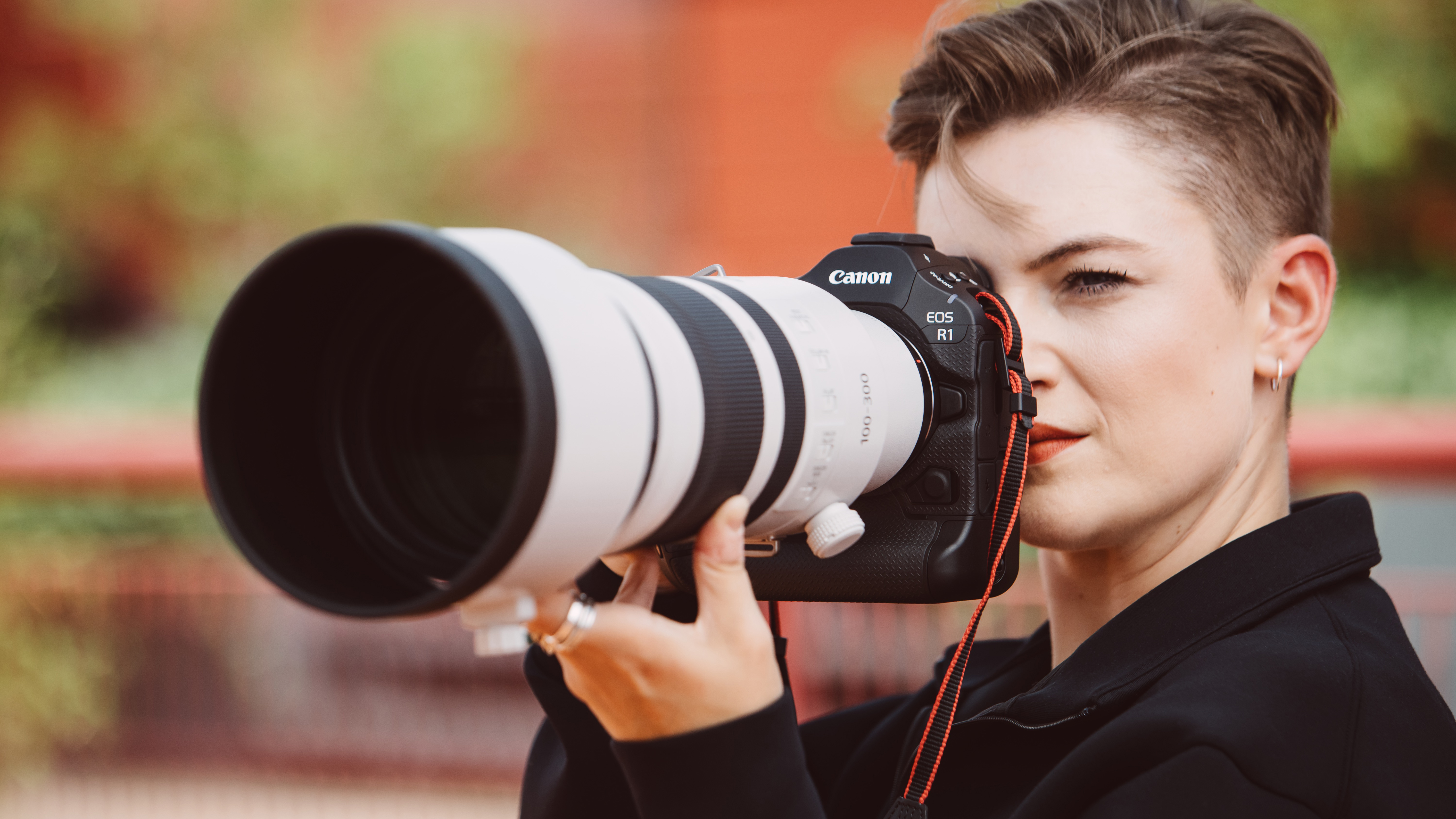
8. Canon EOS R1
Our expert review:
Specifications
Reasons to buy
Reasons to avoid
✅ 6K RAW Recording: While the EOS R1 doesn't offer 8K, its 6K RAW video is exceptionally sharp and clear, delivering professional-grade footage with rich details. It's ideal for videographers who prioritize high-quality video without needing 8K.
✅ Specced for professionals: With fast Wi-Fi6E/11ax 6GHz in-body for file transfers, and a pack of cinema-friendly features including a full-size HDMI port, the EOS R1 is a top-end video shooter.
❌ Limited to 6K: Unlike competitors like the Nikon Z9 and Sony A1 II, the EOS R1 maxes out at 6K video resolution. This might be a dealbreaker for those specifically seeking an 8K camera for future-proofing or ultra-high-resolution projects.
❌ Priced for Professionals: As a high-end professional camera, the EOS R1 is unavoidably expensive. It's targeted at serious professionals, so the price may not be justifiable for enthusiasts or hobbyists.
The EOS R1 is Canon's flagship sports star – however, as well as being brilliant for capturing photographs of fast-moving action, it's also a highly specced 6K camera for the video professional. So while you don't get 8K, you do get an absolute stack of top-tier features. The internal 6K DCI RAW video looks absolutely sublime, recording at up to 60p, and the camera also offers Canon Log 2 and 3/HLG support. Hook it up to an Atomos recorder and you get also ProRes RAW. Elsewhere, you've got a full-size HDMI port, tally lights, 4K DCI/UHD up to 120p, Full HD up to 240p, and the same heat-dissipating system from the EOS R5 Mark II that significantly extends recording times. Suffice to say, this is a beast of a camera for video.
Built for the demanding professional, the EOS R1 is also the first EOS camera to support Wi-Fi6E/11ax 6GHz in-body, and also offers 2.5G Base-T ethernet, all of which give you impressively fast options for getting your footage off the camera. With FTP multi-thread, it's pretty much unmatched for fast file transfers. It's professionally priced, of course, but you do get a lot of camera for your money.
See our full Canon EOS R1 review
Final thoughts
The Canon EOS R1 sets a new standard for flagship mirrorless cameras, combining cutting-edge 6K video recording with exceptional stills performance in a robust and responsive package. With its 45MP full-frame sensor, advanced autofocus system, and 8K/60p recording, the R1 delivers unmatched performance for both professional video creators and photographers.
Canon’s renowned color science, paired with impressive dynamic range and pro-level ergonomics, make it a go-to option for high-end production work. The EOS R1 is truly a game-changer for those seeking a versatile, all-around powerhouse in the 6K camera market.
Best 6K Super 35 camera
Specifications
Reasons to buy
Reasons to avoid
✅ 6K Raw and ProRes Recording: The Pocket Cinema Camera 6K Pro can record rich, detailed files in both raw and ProRes, offering filmmakers incredible flexibility for post-production. The Super35mm sensor ensures high-quality cinematic footage.
✅ Affordability: Despite its high-end features, the Pocket Cinema Camera 6K Pro is still relatively affordable for the level of image quality it offers, making it a budget-friendly option for filmmakers who need professional-grade video.
❌ Handheld Limitations: Without built-in image stabilization, handheld shooting can be challenging, requiring either a tripod, gimbal, or stabilizing rig for smooth footage. This is another factor that makes it less suited for spontaneous shooting.
❌ No Autofocus: The camera lacks continuous autofocus, which can be an issue for run-and-gun shooting or dynamic, fast-paced scenarios where refocusing quickly is critical. This makes it less versatile for those who need autofocus capabilities.
The new Blackmagic Pocket Cinema Camera 6K G2 is cheaper still, but we think it's worth paying the extra (and it's not much) for the Blackmagic Pocket Cinema Camera 6K Pro. It's an evolution of the original 6K model which adds features missing from the first, including in-built ND filters.
First of all, though, you have to get used to the handling from the odd size and large shape of the Super35mm Blackmagic Pocket Cinema Camera 6K Pro – which is certainly far from being pocket size. And the lack of continuous autofocus, image stabilization, or any auto-exposure can be an issue for some. It’s definitely not a run-and-gun camera. But if you use it as a tool for considered, cinematic shooting then it’s a bit of a steal as it produces rich, detailed files in raw or ProRes from its dual native ISO sensor.
Read our full Blackmagic Pocket Cinema Camera 6K Pro review for more details
Final thoughts
The Blackmagic Pocket Cinema Camera 6K Pro offers exceptional 6K cinematic video quality in a compact, user-friendly package, making it a top choice for filmmakers on a budget. Its Super 35mm sensor, 13 stops of dynamic range, and support for Blackmagic RAW and ProRes recording ensure professional-grade footage, while the 5-inch HDR touchscreen and built-in ND filters enhance its versatility on set.
Ideal for indie filmmakers and content creators, the 6K Pro provides robust performance, making it one of the best 6K cameras for cinematic production in 2025 without breaking the bank.
Best 6K Panasonic camera
Specifications
Reasons to buy
Reasons to avoid
✅ 6K ‘Open-Gate’ Recording: The Lumix S5 IIX offers 6K 'open-gate' video recording at up to 30p, providing filmmakers with a flexible and high-resolution option for detailed footage, including more flexibility for cropping and reframing in post-production.
✅ 5.8K ProRes & RAW: When connected to an external SSD, the S5 IIX can record 5.8K Apple ProRes internally, and it also supports Apple ProRes RAW when paired with an Atomos recorder. These formats offer industry-standard quality and flexibility in post-production, especially for professionals who need maximum editing latitude.
❌ Limited to 6K: While 6K is still a very high resolution, some users may be disappointed by the lack of 8K video capabilities, especially when competitors like the Canon EOS R5 or Nikon Z9 offer 8K recording for future-proofing.
❌ Large File Sizes: The high bitrates and ProRes formats produce larger file sizes, which may require more robust post-production hardware and storage solutions, potentially increasing the total cost of ownership.
The Lumix S5 IIX is a video-focused variant of Panasonic's successful Lumix S5 II, the camera that finally brought phase-detection autofocus to the Lumix brand. That camera was also already pretty much a beast as far as video spec was concerned, so what does the S5 IIX actually do differently? Well, the headline video resolutions are the same – both can shoot 6K 'open-gate' at up to 30p, as well as a range of other resolutions and frame rates. However, the Lumix S5 IIX offers substantially higher bitrates (up to 800Mbps in C4K) internally. Plus, if you hook it up to an external SSD, it can capture 5.8K Apple ProRes, as well as Apple Pro Res RAW when hooked up to an Atomos recorder.
Quite technical-sounding differences, but for serious filmmakers, they make a huge difference. Our reviewer was hugely impressed with the Lumix S5 IIX, awarding it the full five-star score as a top-tier camera that slots easily into professional workflows while still delivering premium video quality. The 6K footage just consistently delivers, and at such a competitive price, the Lumix S5 IIX should warrant consideration from any serious video shooter.
See our full Panasonic Lumix S5IIX review
Final thoughts
The Panasonic Lumix S5 IIX is a versatile powerhouse that delivers both 6K video and exceptional stills performance in a compact, durable body. Its full-frame 24.2MP sensor, 10-bit 4:2:2 internal recording, and impressive low-light capabilities make it a go-to choice for hybrid shooters.
With advanced video features like V-Log, high frame rate recording, and 5-axis in-body stabilization, the S5 IIX stands out for content creators who need high-quality video in demanding environments. Its well-rounded performance, combined with excellent autofocus and portability, solidifies the S5 IIX as one of the best 6K cameras for 2025.
Best 12K camera
Specifications
Reasons to buy
Reasons to avoid
✅ 12K Recording: The Ursa Mini Pro 12K offers an exceptional 79.6-megapixel CMOS sensor that enables shooting in 12K resolution, providing stunning detail and clarity, ideal for high-end production where maximum resolution is crucial.
✅ High-Speed Shooting: When reduced to 8K or 4K, the Ursa Mini Pro 12K can shoot at frame rates that exceed what many other cameras offer, making it suitable for slow-motion effects and high-speed capture.
❌ Super35mm Sensor: The camera uses a Super35mm sensor, which, while still capable, is not as advanced as some of the newer full-frame sensors available in other high-end cameras.
❌ No IBIS: The absence of in-body image stabilization (IBIS) means that the camera requires additional stabilization equipment to achieve smooth handheld shots, which can add to the overall setup complexity and cost.
If you really must have the bragging rights that come with owning the highest-resolution video camera on the market, then the Blackmagic Ursa Mini Pro 12K is it. With a 79.6-megapixel CMOS sensor, it shoots 12K Blackmagic Raw files which give stunning quality with 14 stops of dynamic range and very filmic colors. Reduce it to a more reasonable 8K and 4K, and not only is the quality incredible, but you can shoot at fast frame rates that no other cameras can.
But a camera is more than just its headline resolution and the Ursa Mini Pro 12K is based on the original Ursa Mini Pro launched almost four years ago and is starting to show its age. For example, it has a Super35mm sensor, no IBIS, no codecs other than Raw, no continuous autofocus at all, and certainly no phase-detection AF. It’s really a camera for experienced cinematographers shooting narrative dramas such as feature films and VFX specialists rather than all-rounders.
Read our full Blackmagic Ursa Mini Pro 12K review for more details
Final thoughts
The Blackmagic Ursa Mini Pro 12K is a true powerhouse, offering 12K resolution and unrivalled detail for high-end video production. With its Super 35mm sensor, 14 stops of dynamic range, and support for Blackmagic RAW and ProRes recording, the Ursa Mini Pro 12K provides cinematic-quality footage with exceptional clarity and color depth.
Its modular design and robust feature set - combined with a wide range of professional video outputs - make it a perfect fit for filmmakers, DPs, and studios requiring top-tier performance. For those seeking the best in ultra-high-definition video, the Ursa Mini Pro 12K is a standout in the 12K and 8K camera landscape.
How to choose the best 8K or 6K camera
While a lot of attention is paid to headline resolution when it comes to cameras for video, when choosing the right model for you, it's worth taking a holistic view of the specs. For instance, high-resolution video modes often come with a number of caveats – a camera may be able to shoot 8K 60p, but how long can it sustain that resolution before overheating? Does the video mode use the full width of the sensor or does it incur a crop – this can make it harder to shoot at wider angles. And on that note, larger sensor sizes are also a plus as they provide greater dynamic range and better capacity for shooting with a shallow depth of field. However, they come at a cost.
Almost all of the cameras on this list have interchangeable-lens mounts, so it's also worth looking at the lens selection for each one. Size and weight may also be an issue, particularly if you're planning on travelling with your shooting setup.
How we test 8K and 6K cameras
We test 8K and 6K cameras both in real-world shooting scenarios and in carefully controlled lab conditions. Our lab tests measure resolution, dynamic range, and signal-to-noise ratio. Resolution is measured using ISO resolution charts, dynamic range is measured using DxO Analyzer test equipment and DxO Analyzer is also used for noise analysis across the camera's ISO range.
As well as lab testing, our reviewers also assess every camera's real-world usability and how a model performs out in the field. This includes looking at how well laid-out its controls are, how easy various functions are to find and use, and how it responds to different shooting challenges. We look at a camera's wider place in the market as well, weighing it up against its competition to see whether it's worth the price its manufacturers are asking. We make our judgements based on years of expertise in the fields of filmmaking and photography.
Find out how we test and review on Digital Camera World.
FAQs
How much more resolution is there in 8K compared to 4K
Resolution is measured in terms of the total number of pixels in an image. A 4K image roughly measures 4000 pixels across - and an 8K image is approximately 8000 pixels across. So in terms of area, 8k is four times bigger - with four times as many pixels (and four times the resolution).
Typical resolutions for each format are given in the table below for video shot in a 16:9 aspect ratio:
Format | Pixel dimensions | Total pixels |
|---|---|---|
12K | 12288 x 6912 | 84MP |
8K | 7680 x 4320 | 33MP |
6K | 6144 x 3456 | 18MP |
4K (UHD) | 3840 x 2160 | 8MP |
2K (Full HD) | 1920 x 1080 | 2MP |
Where can I watch 8K content?
8K TVs have been on the market since 2018, but the film and television industries have been slow to catch up with dedicated content. For now, platforms like YouTube and Vimeo are the best places to explore 8K, with a wealth of user-shot footage available to stream. A handful of Hollywood studios have also dipped their toes in, releasing trailers in 8K for films such as Barbie, Wonka, and Dune: Part Two.
Is 8K worth it?
With so little native 8K content available, it’s fair to question whether the jump is really worth it. Ultimately, that decision comes down to you as a filmmaker – but there are clear benefits to shooting in 8K that go beyond simply delivering in the format.
Much like the early days of 4K, when Full HD was still the standard, 8K gives you extra creative freedom even if your final output is only in 4K. The higher resolution allows you to crop heavily into your footage without losing quality, giving you far more flexibility in the edit. You can reframe shots, adjust composition, or even add smooth pans and zooms to static footage – all while still maintaining crisp 4K results.
The best camera deals, reviews, product advice, and unmissable photography news, direct to your inbox!
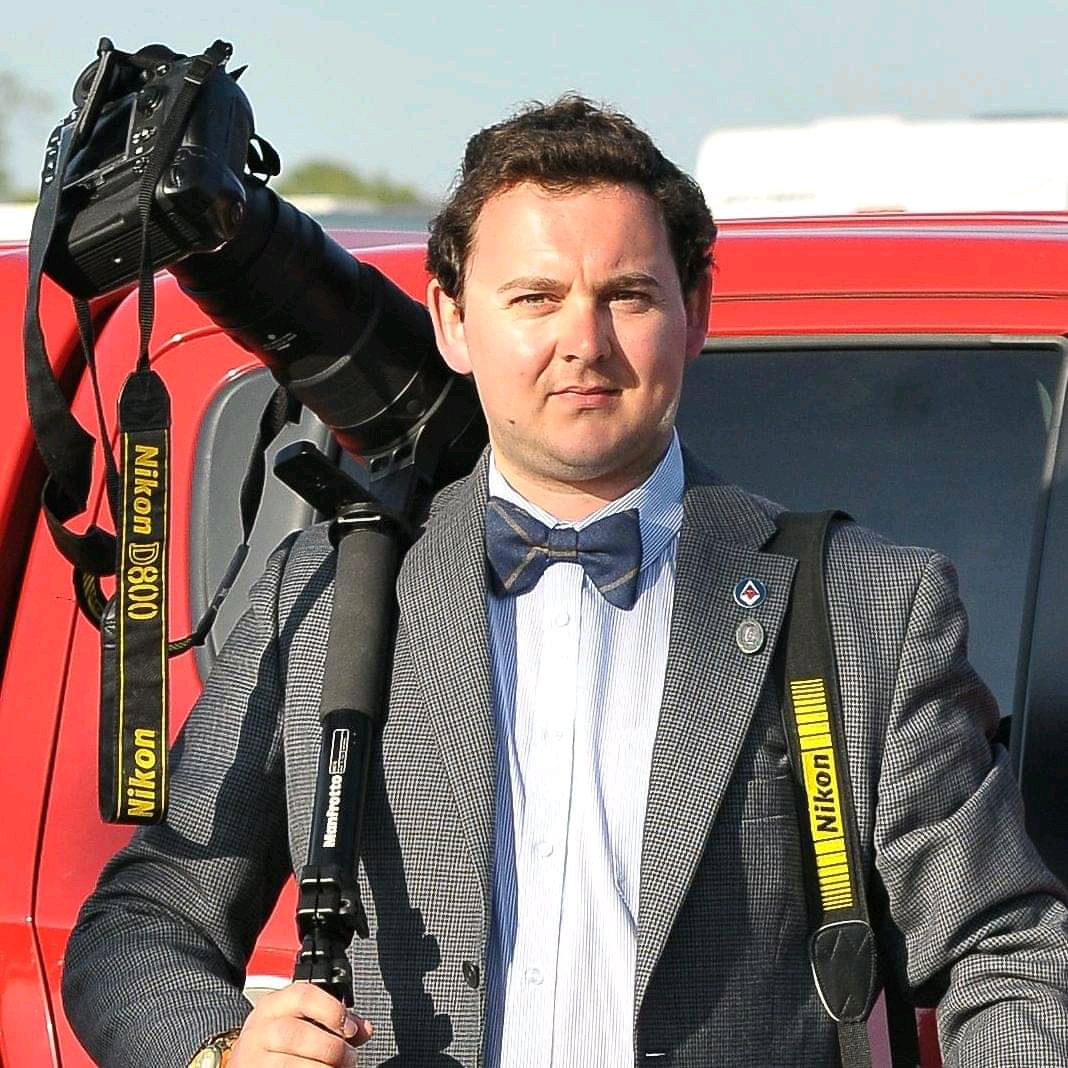
For nearly two decades Sebastian's work has been published internationally. Originally specializing in Equestrianism, his visuals have been used by the leading names in the equestrian industry such as The Fédération Equestre Internationale (FEI), The Jockey Club, Horse & Hound, and many more for various advertising campaigns, books, and pre/post-event highlights.
He is a Fellow of the Royal Society of Arts, holds a Foundation Degree in Equitation Science, and holds a Master of Arts in Publishing. He is a member of Nikon NPS and has been a Nikon user since his film days using a Nikon F5. He saw the digital transition with Nikon's D series cameras and is still, to this day, the youngest member to be elected into BEWA, the British Equestrian Writers' Association.
He is familiar with and shows great interest in 35mm, medium, and large-format photography, using products by Leica, Phase One, Hasselblad, Alpa, and Sinar. Sebastian has also used many cinema cameras from Sony, RED, ARRI, and everything in between. He now spends his spare time using his trusted Leica M-E or Leica M2, shooting Street/Documentary photography as he sees it, usually in Black and White.

